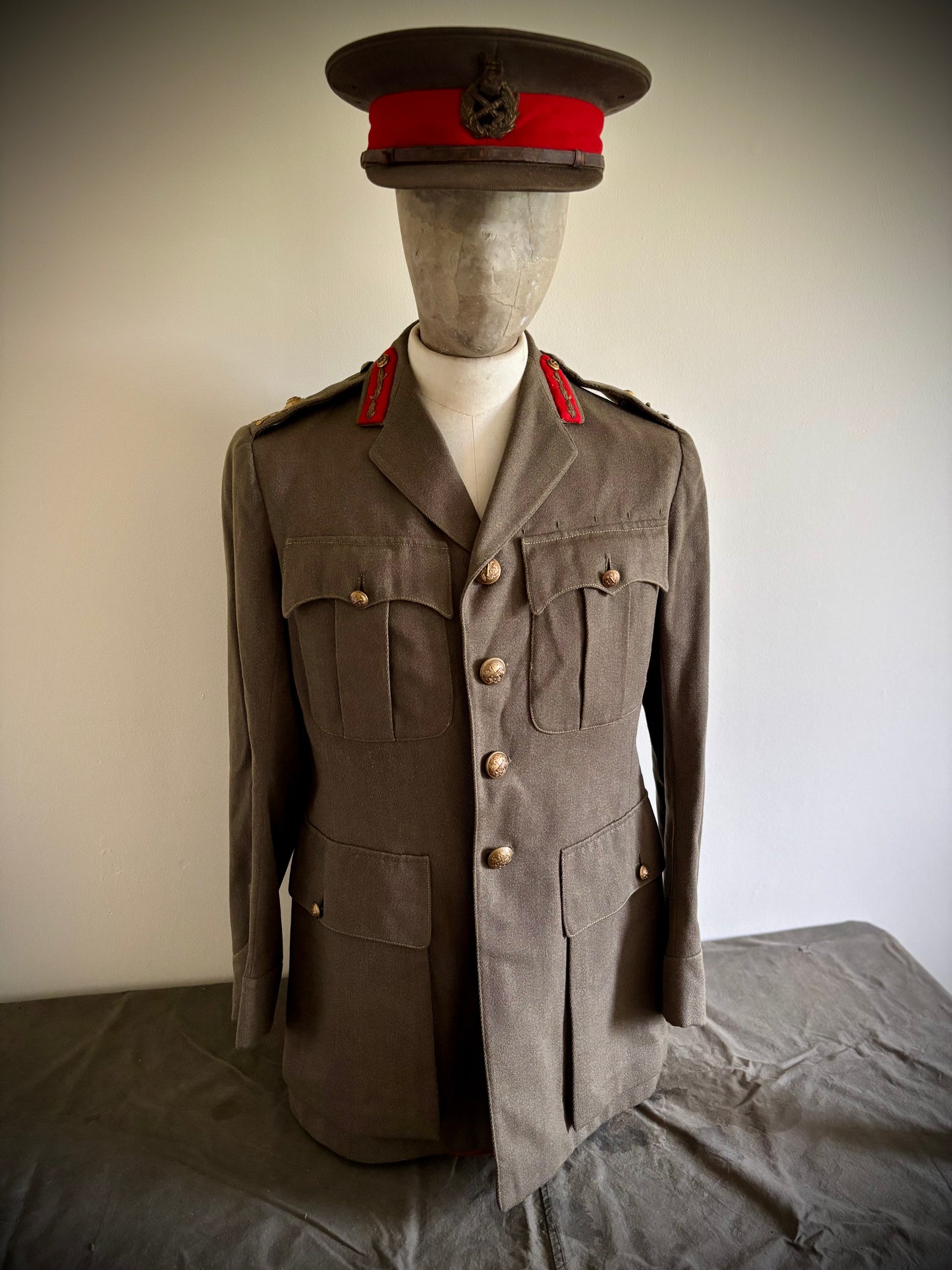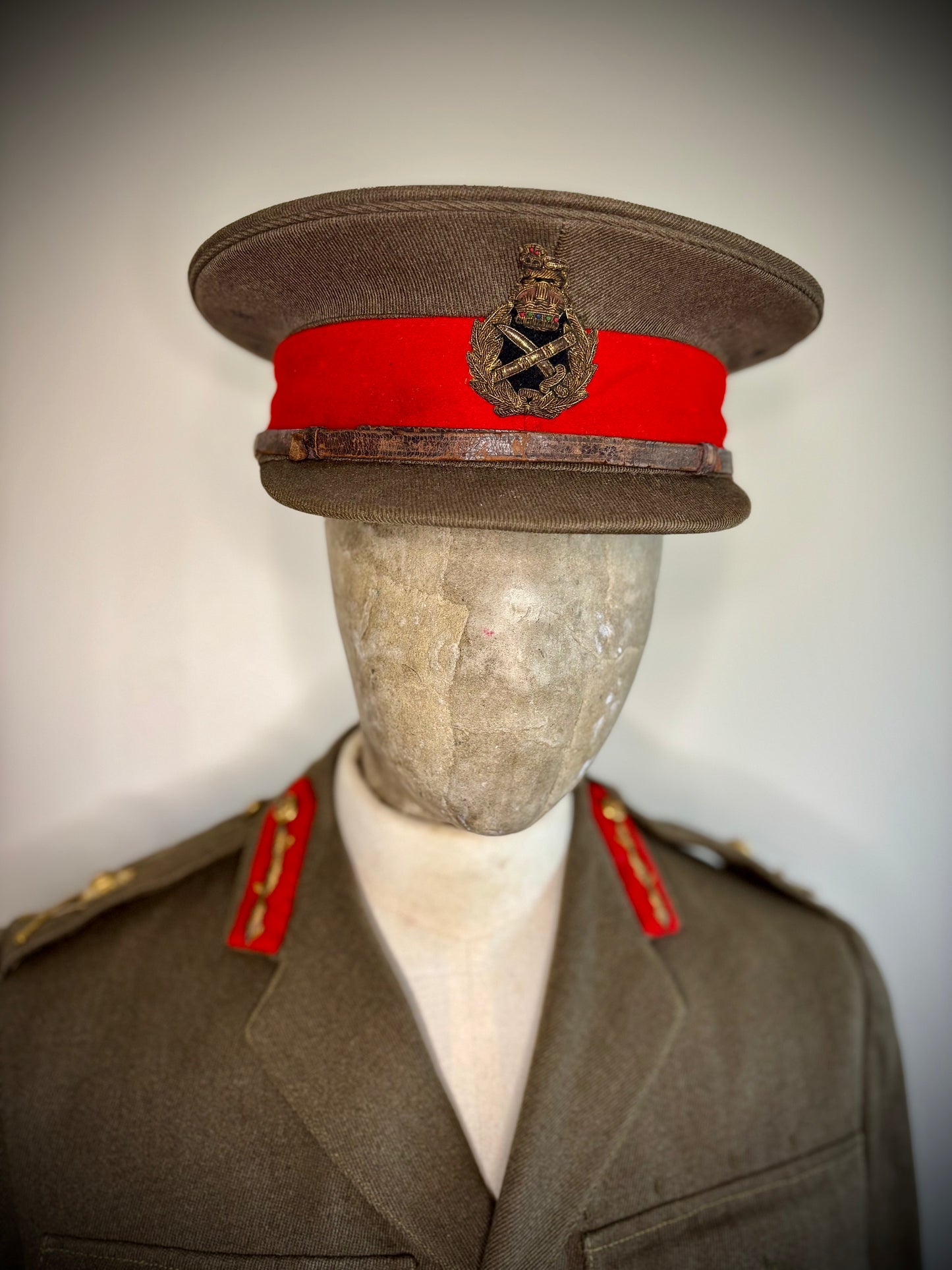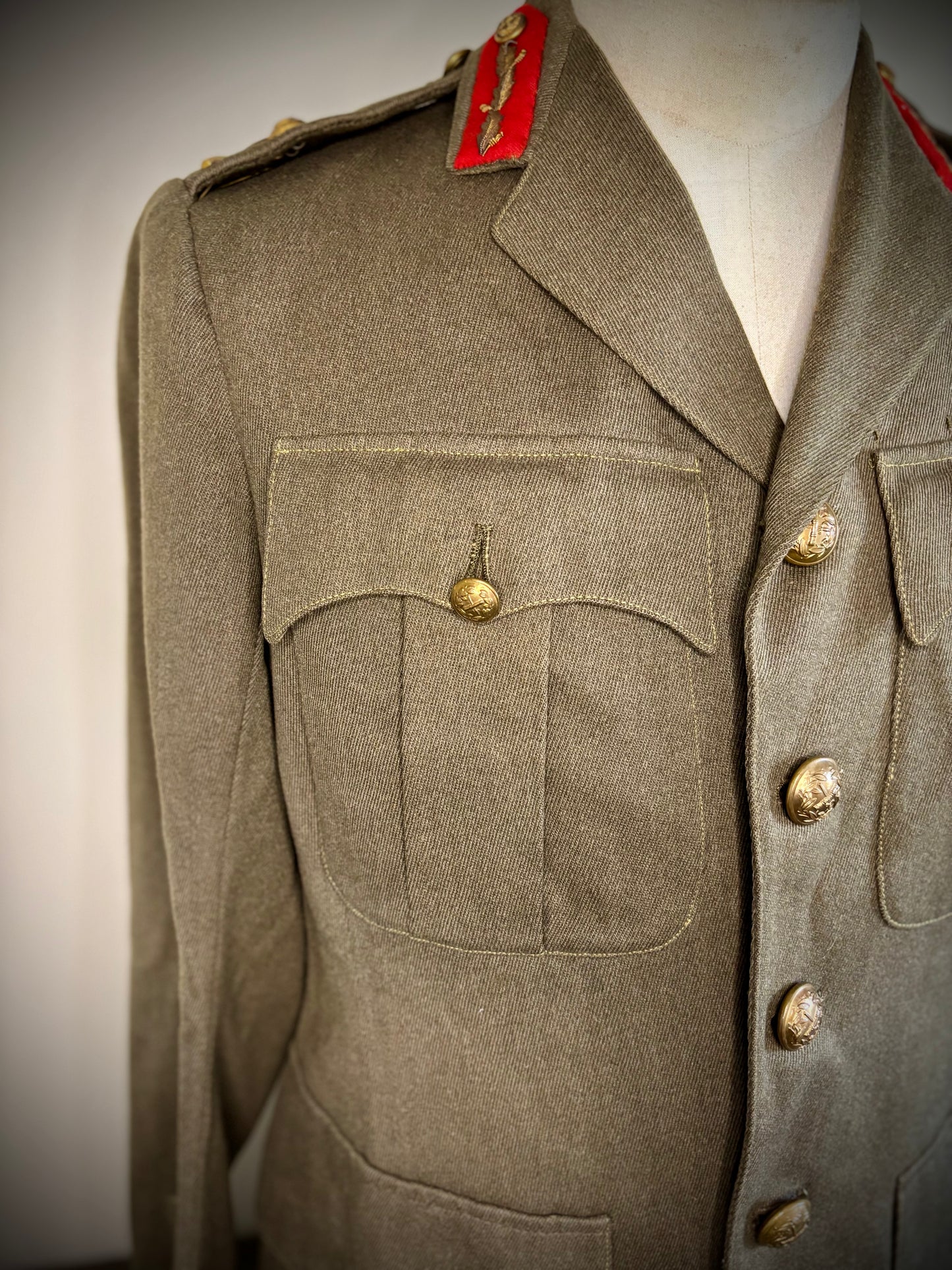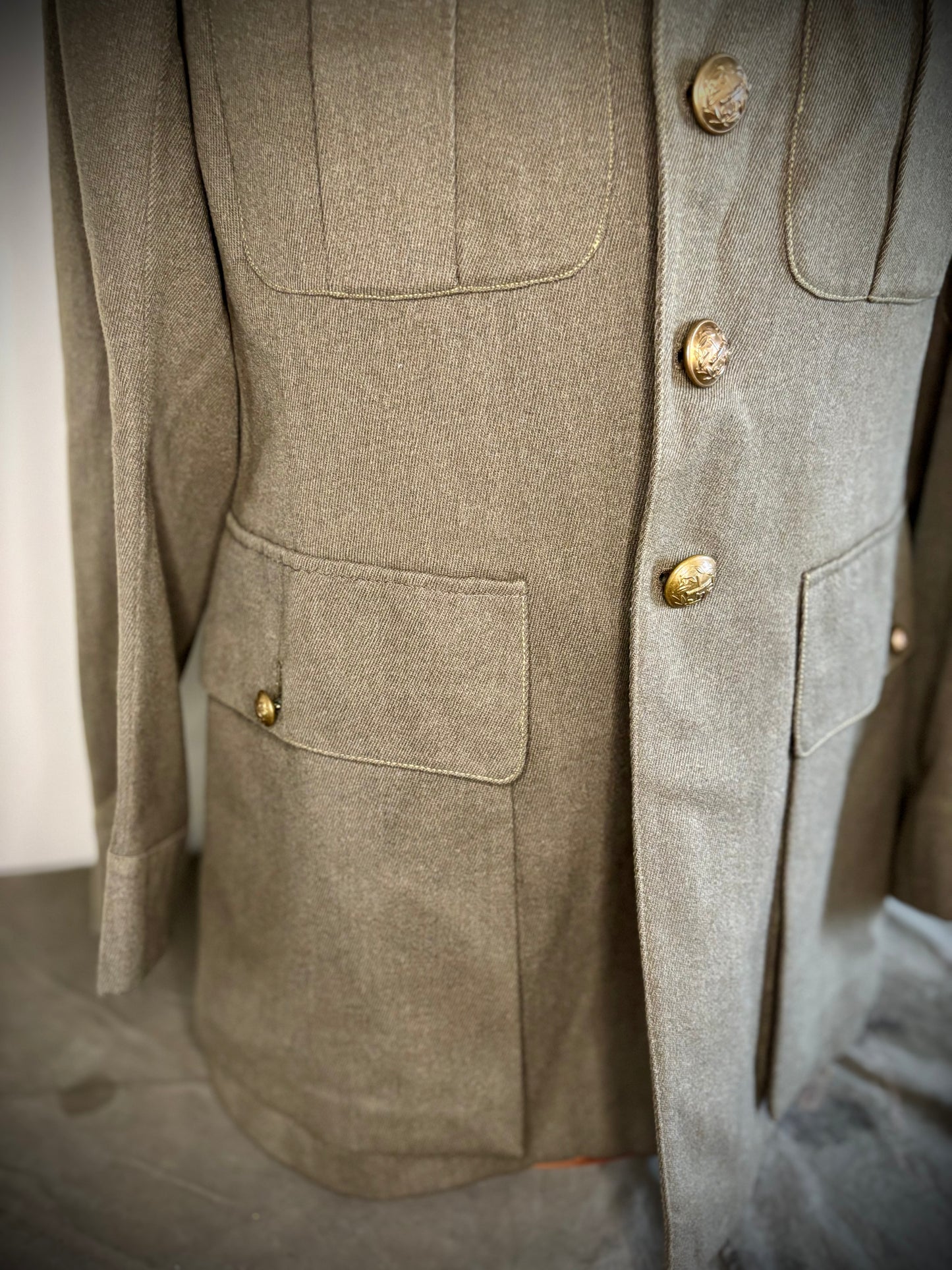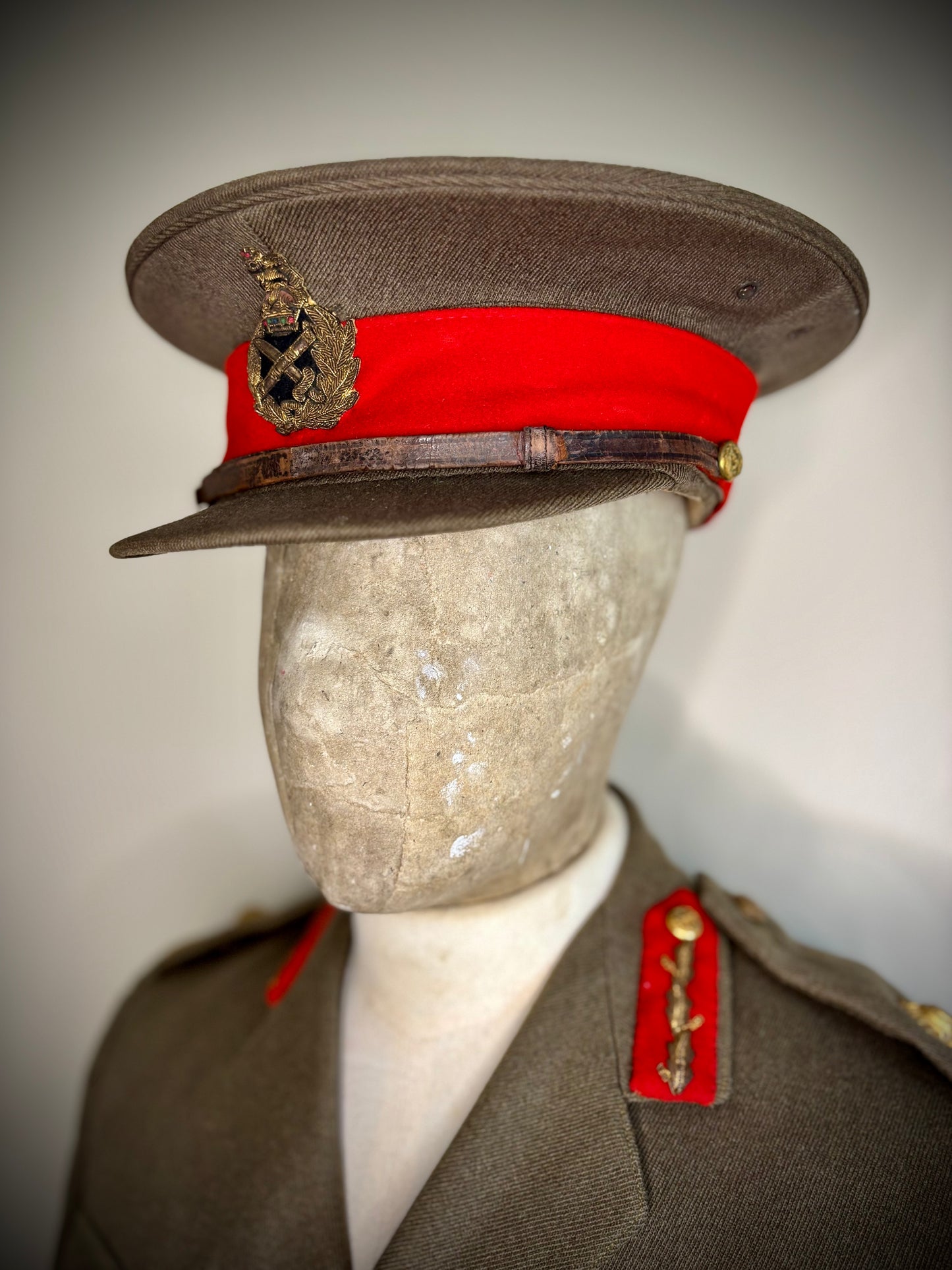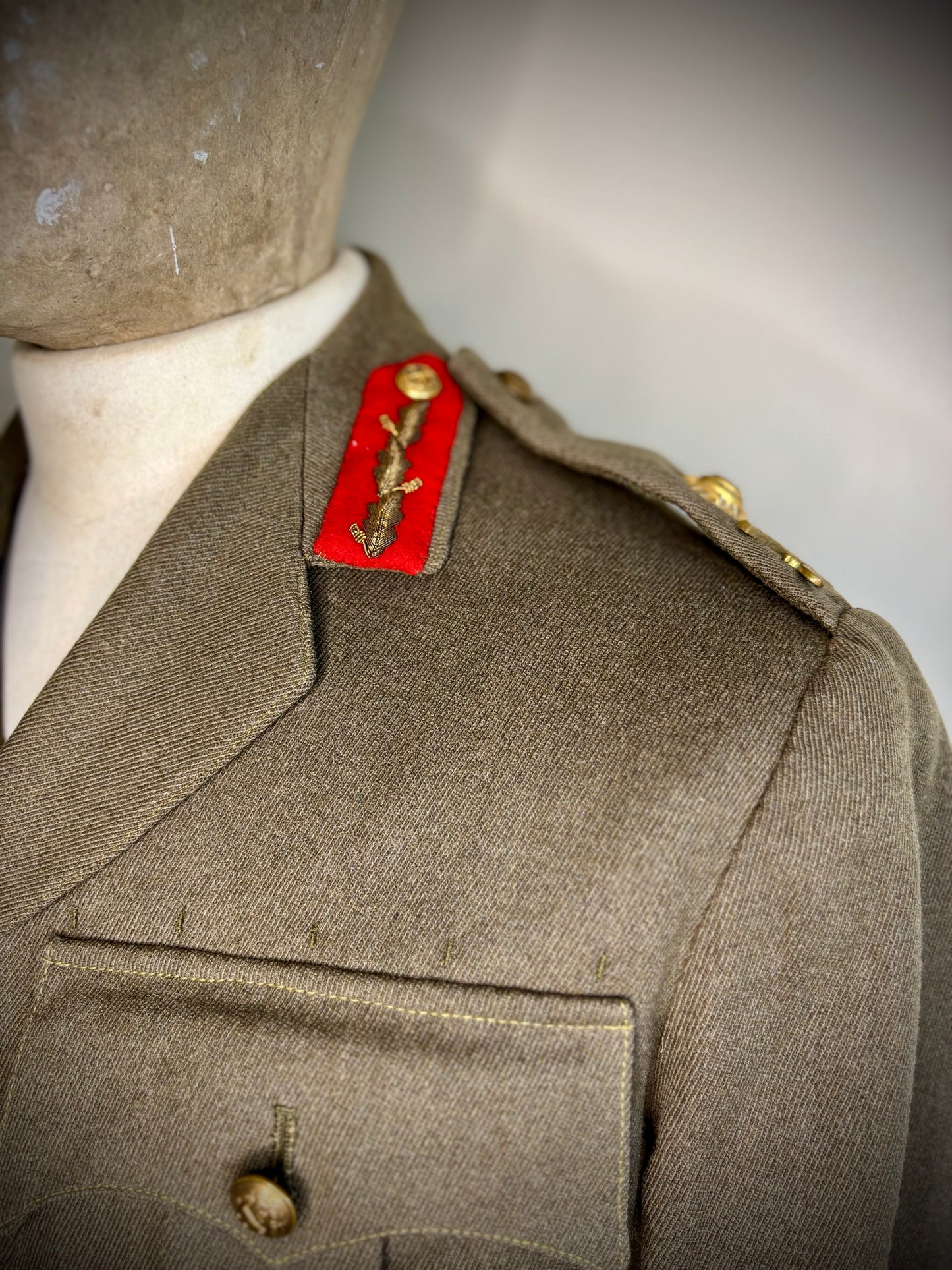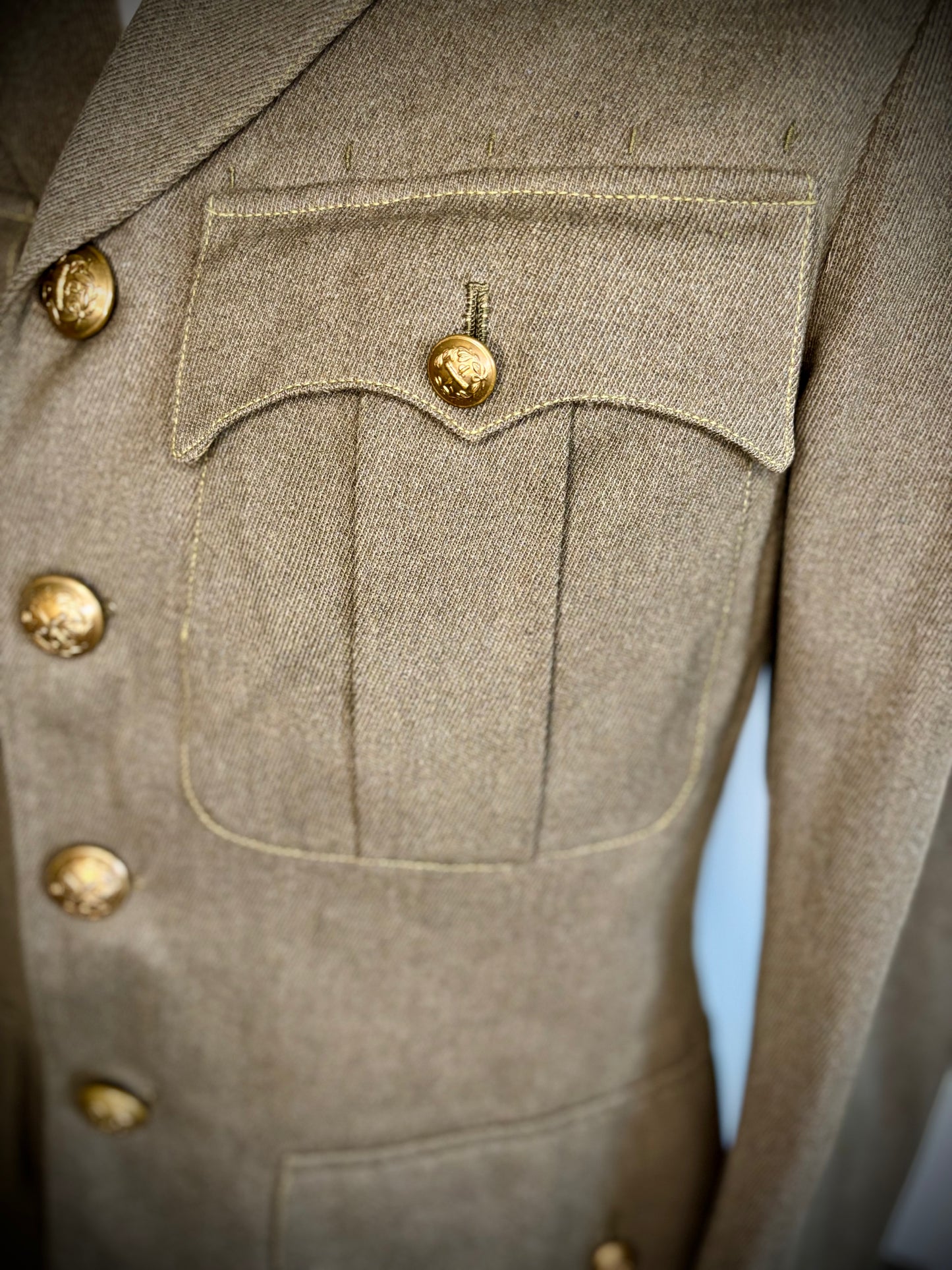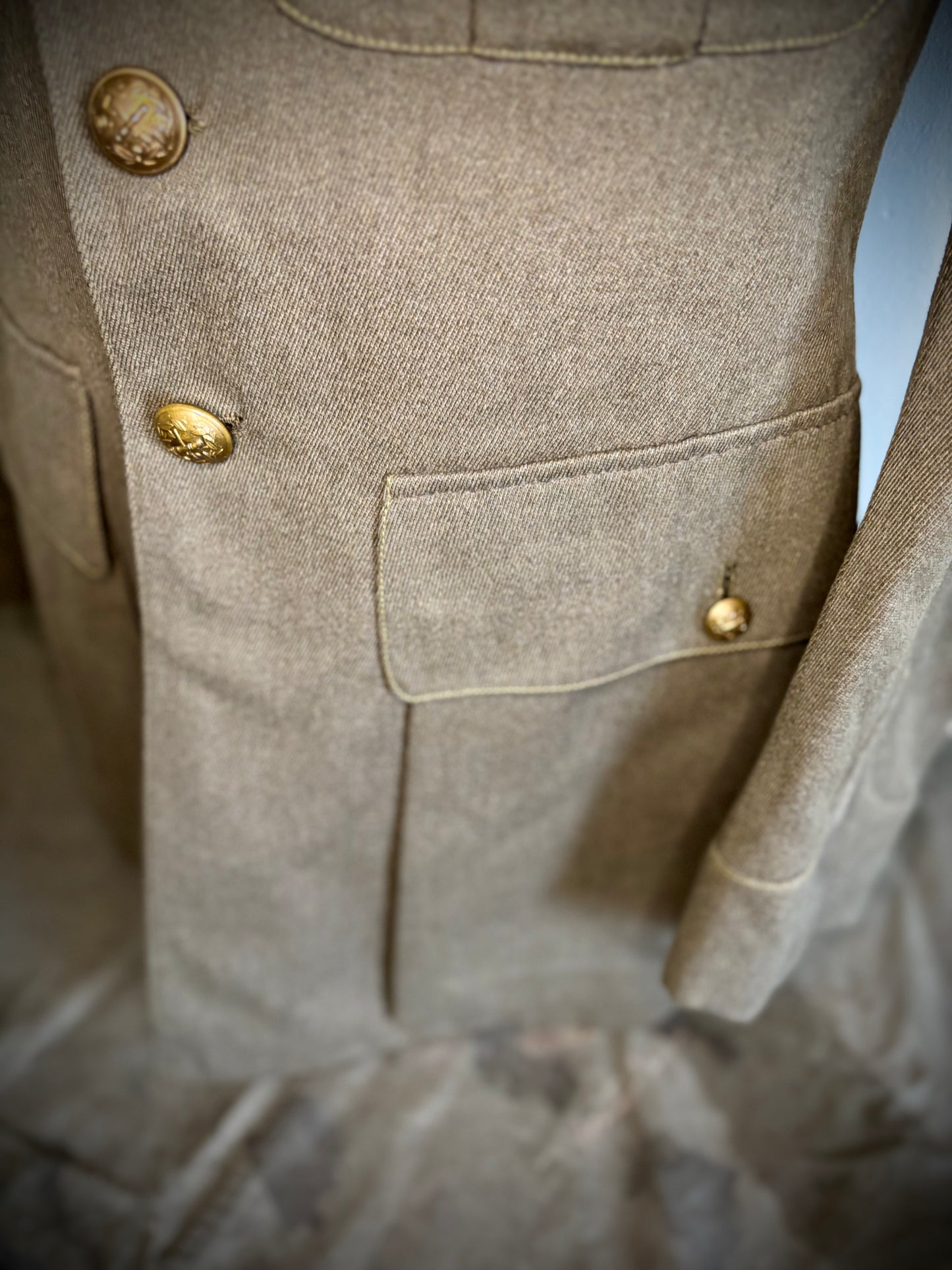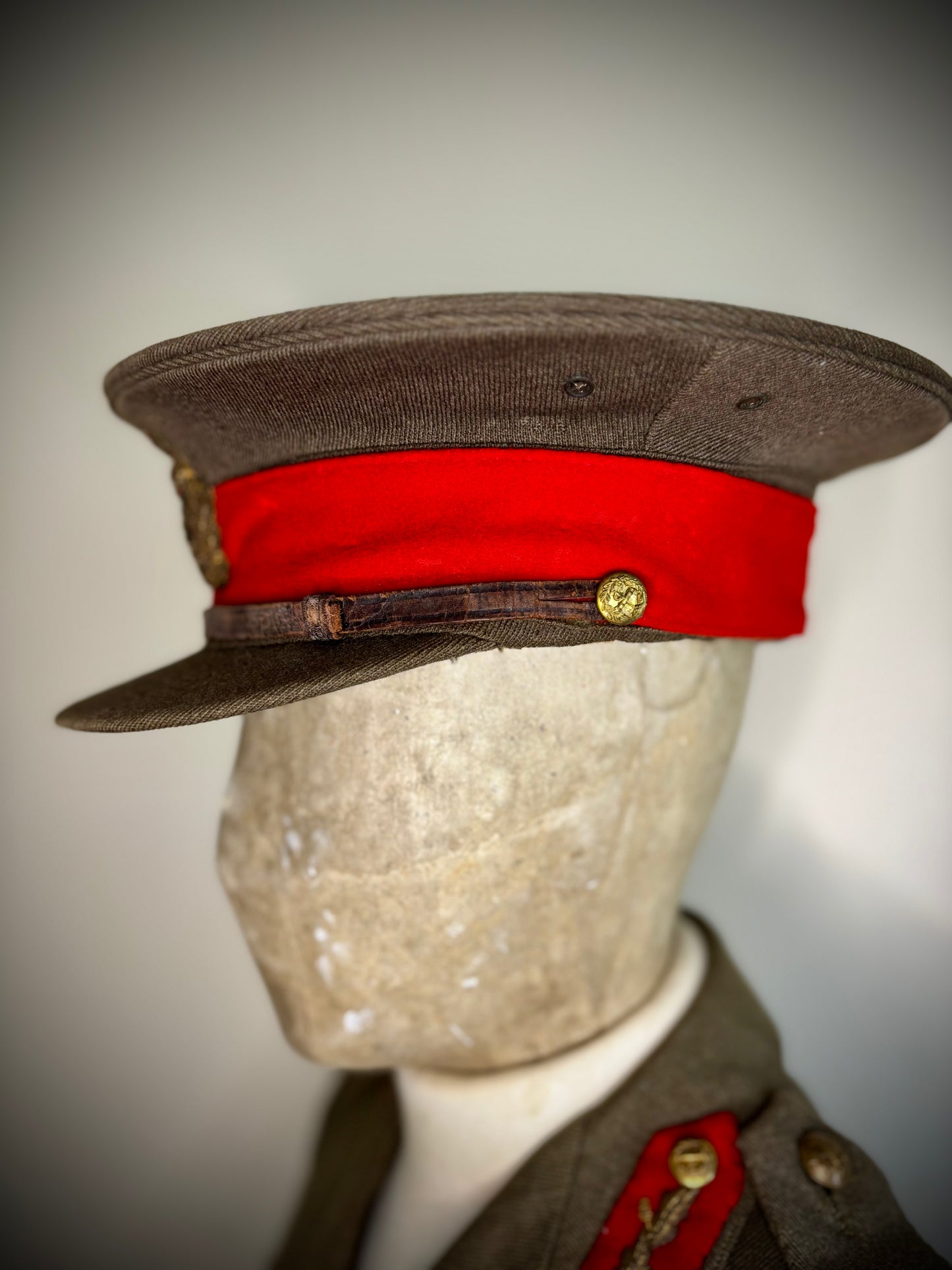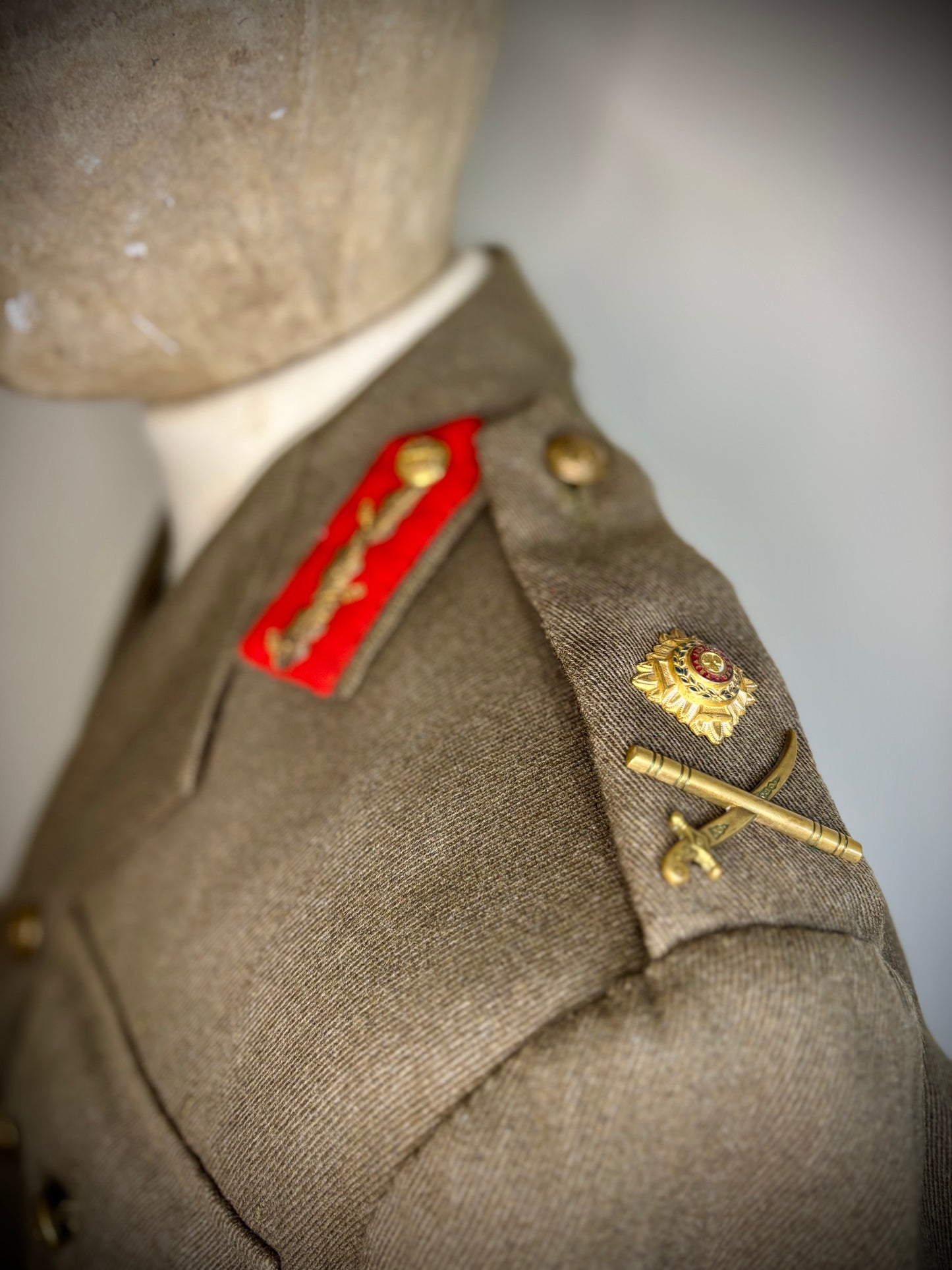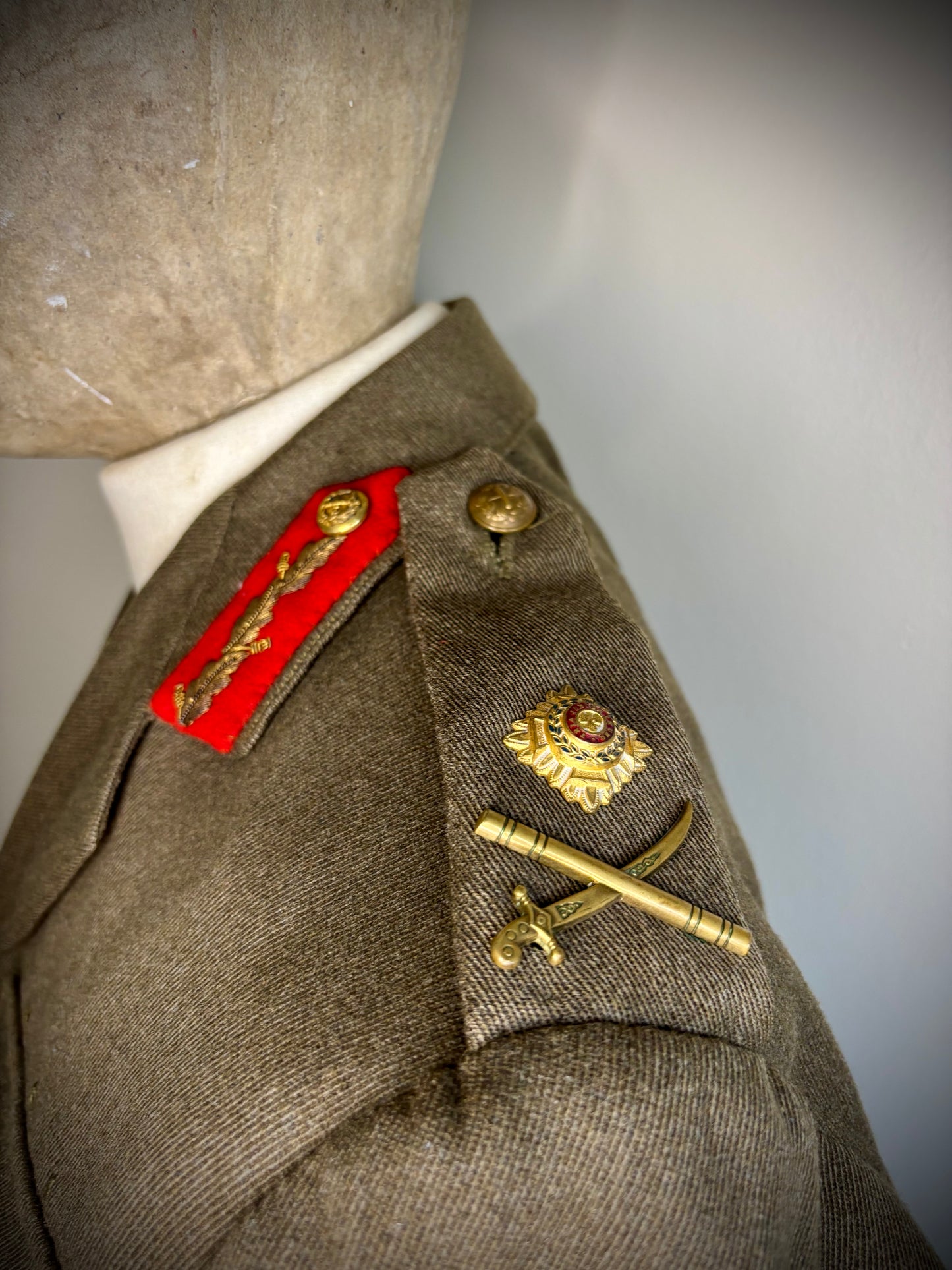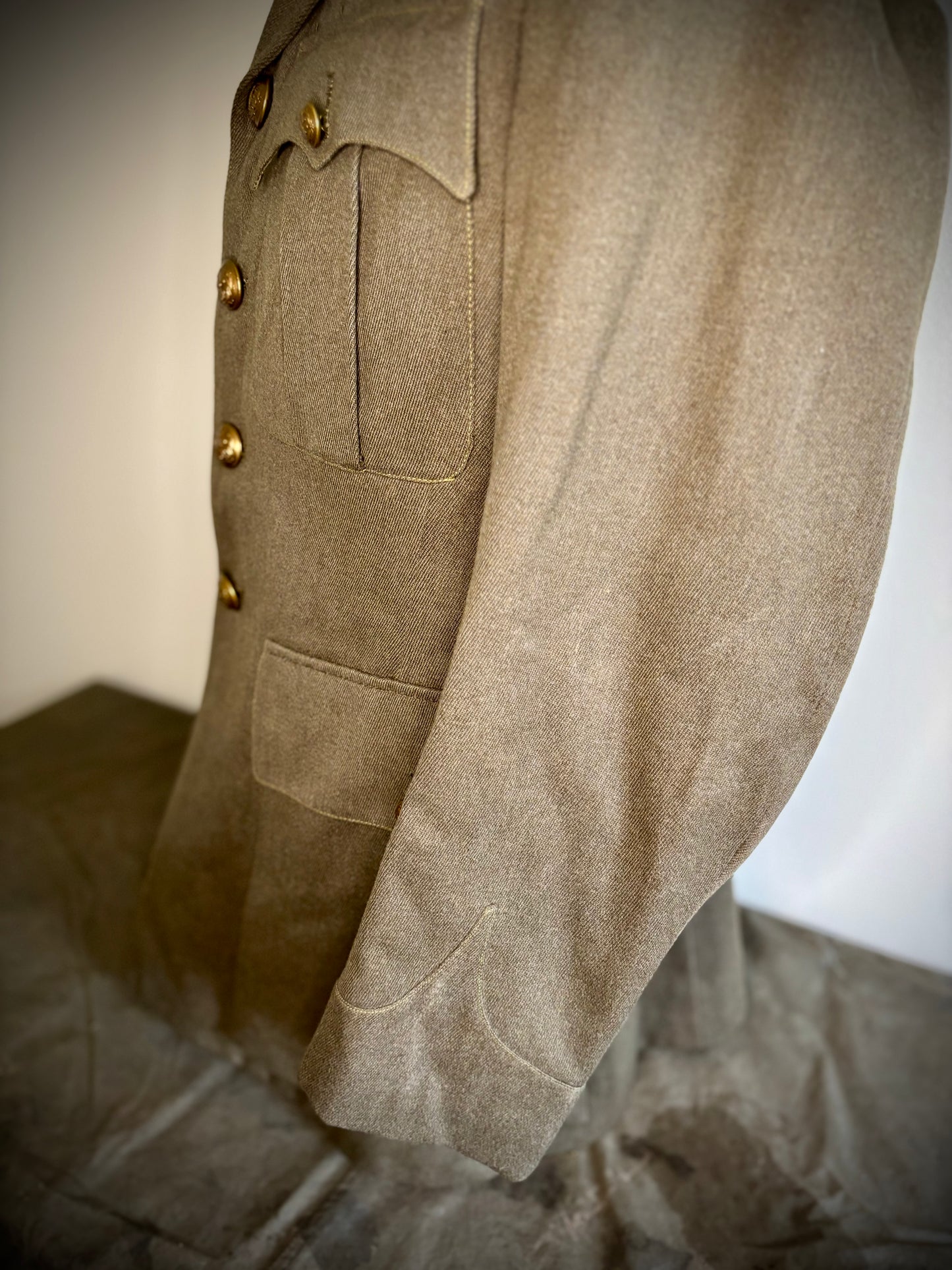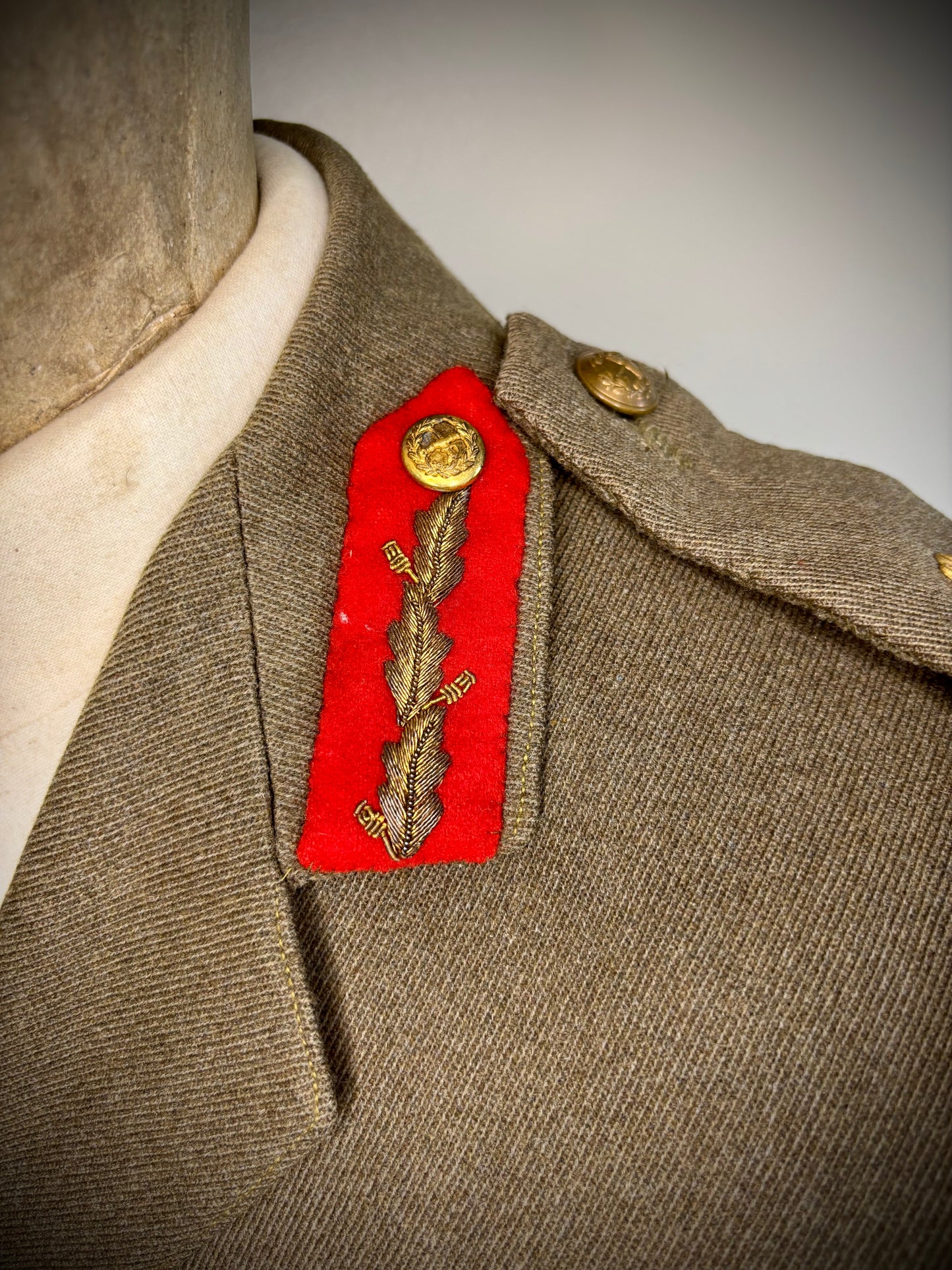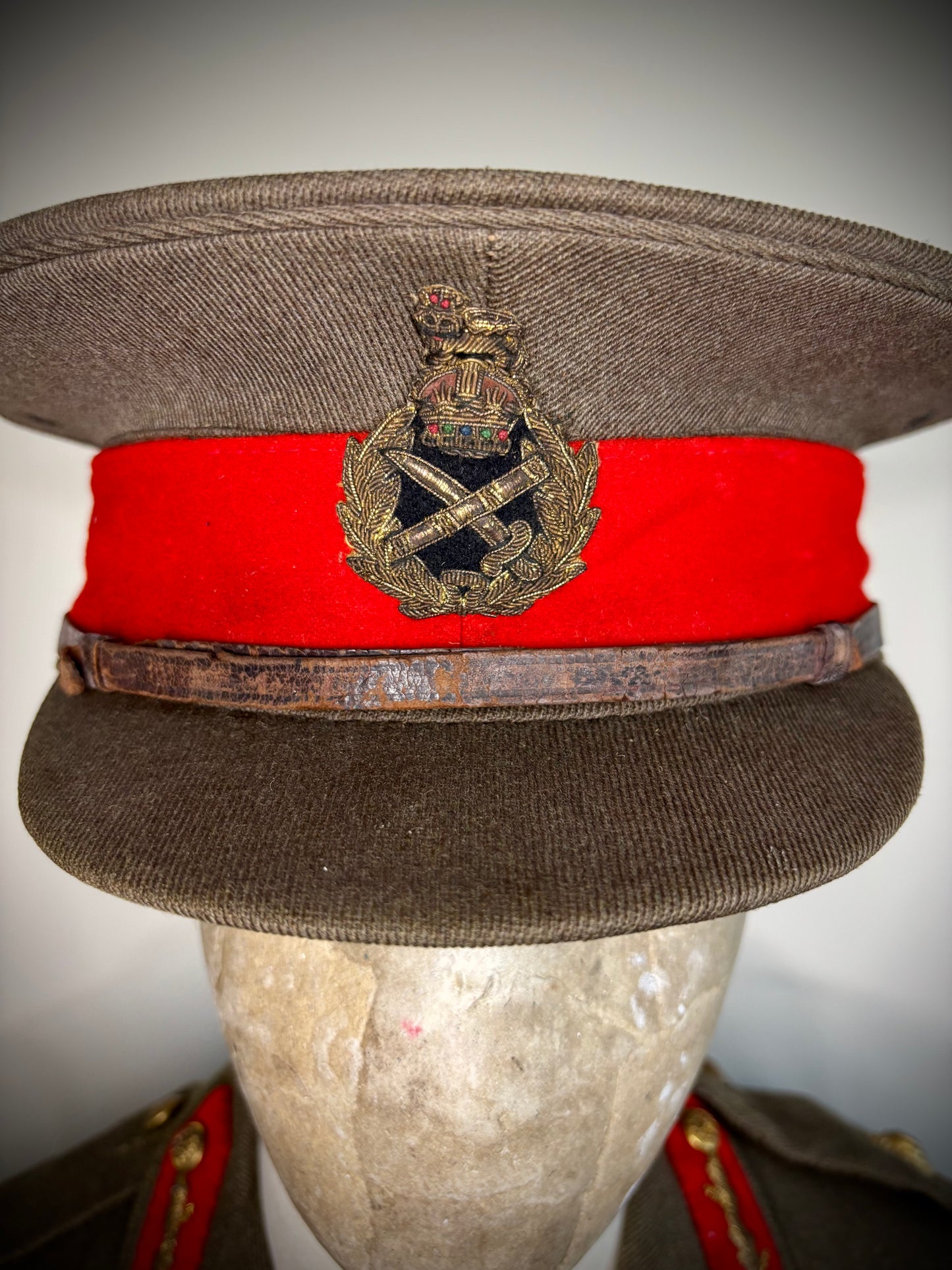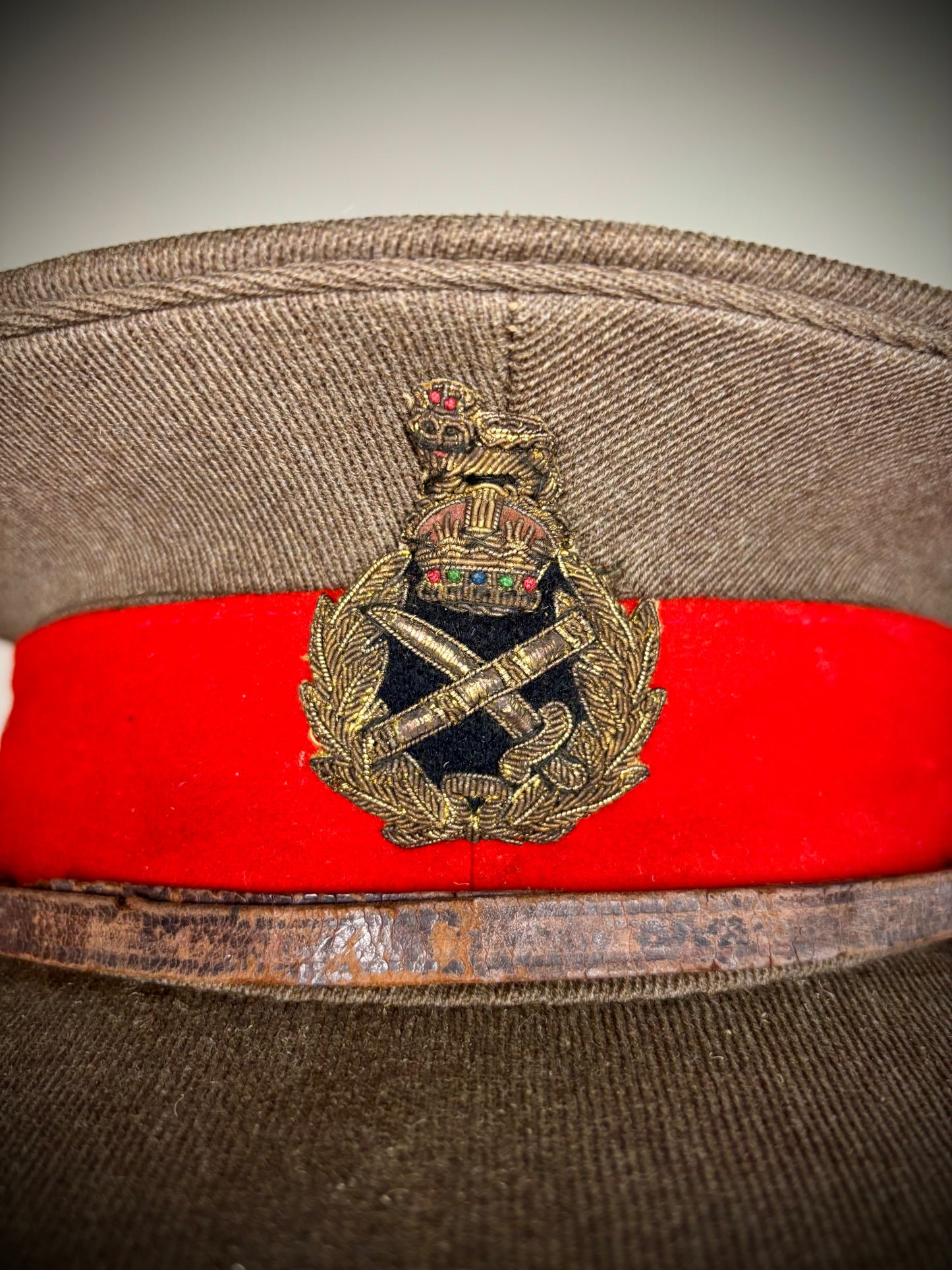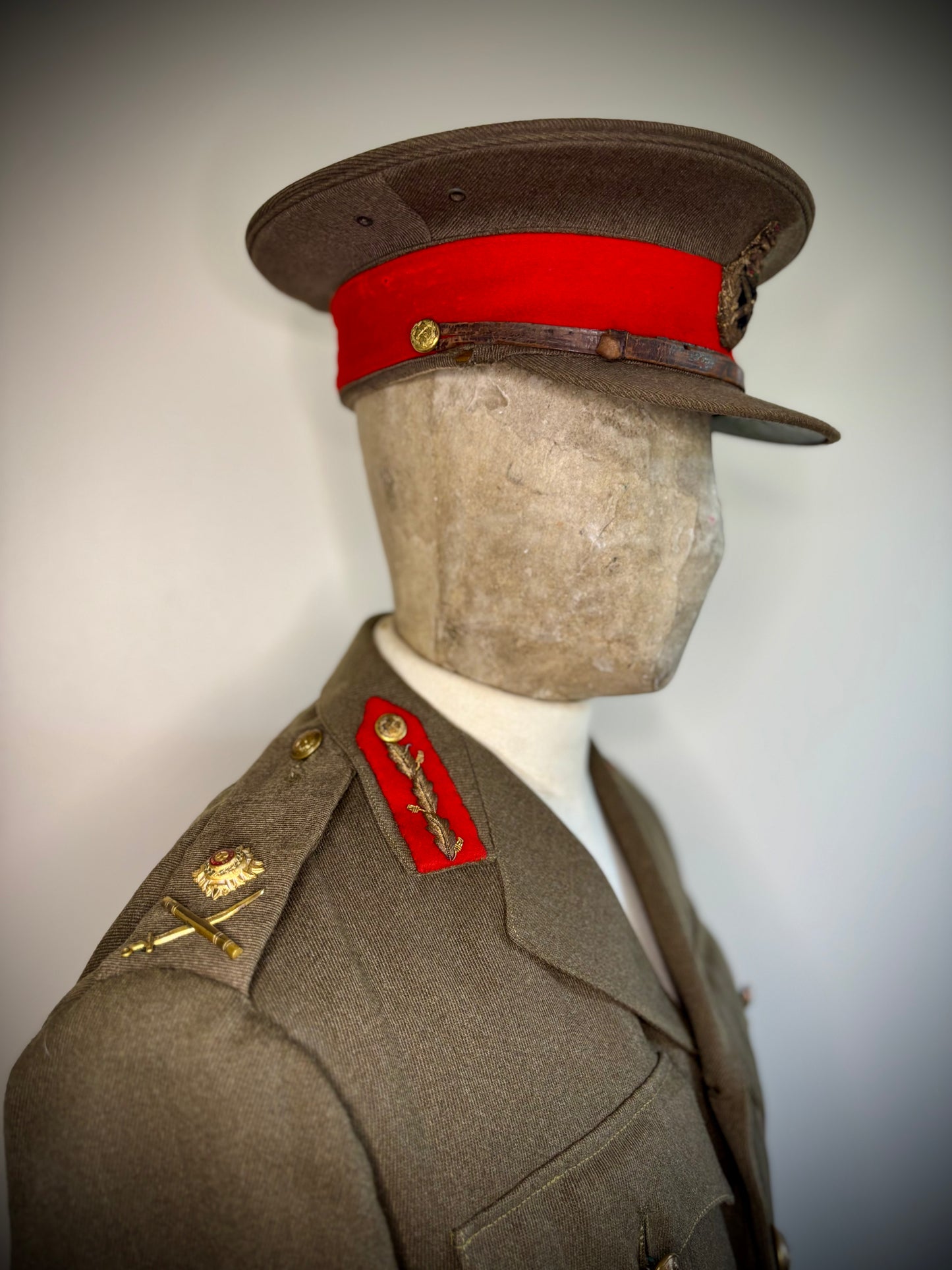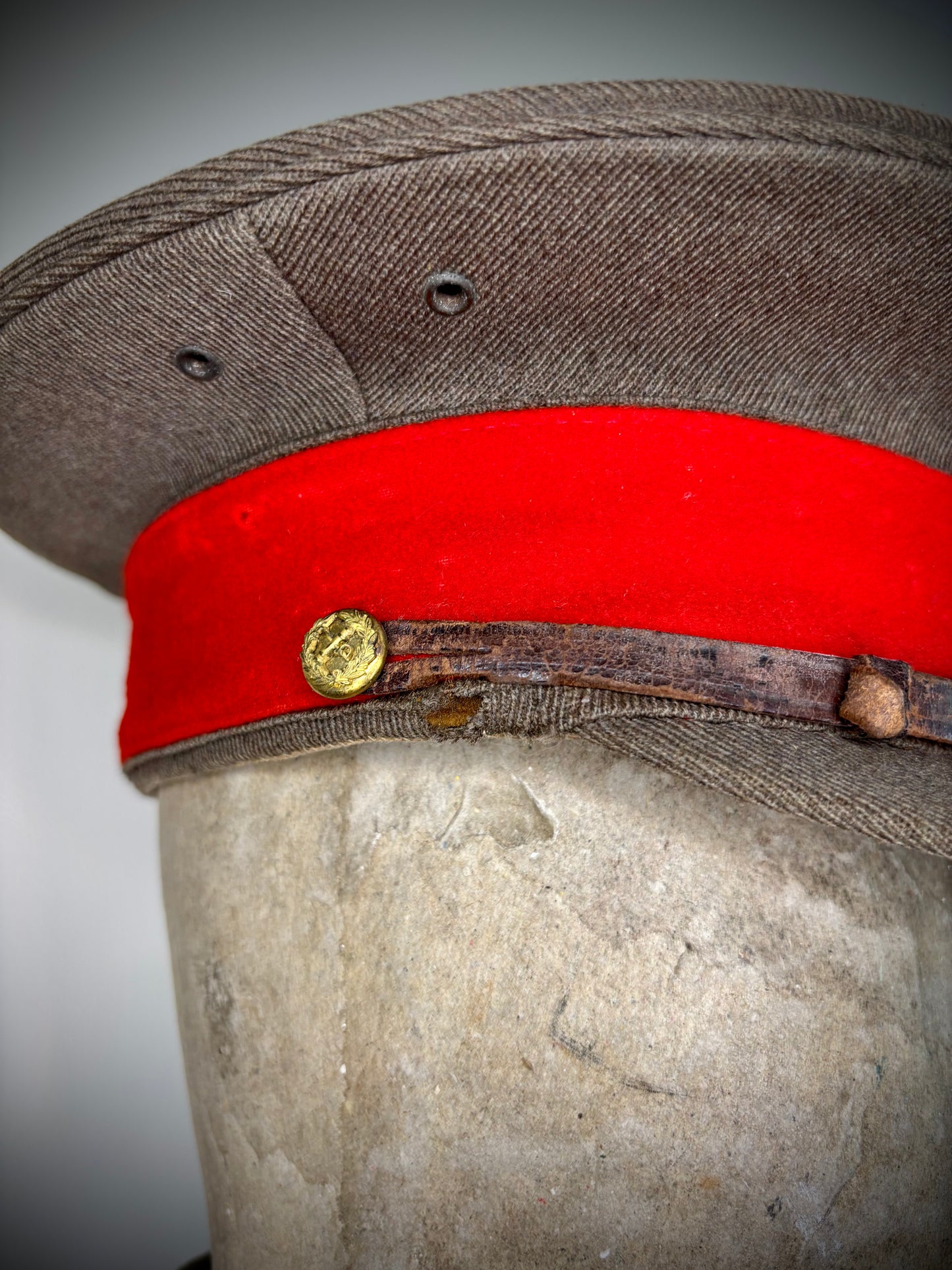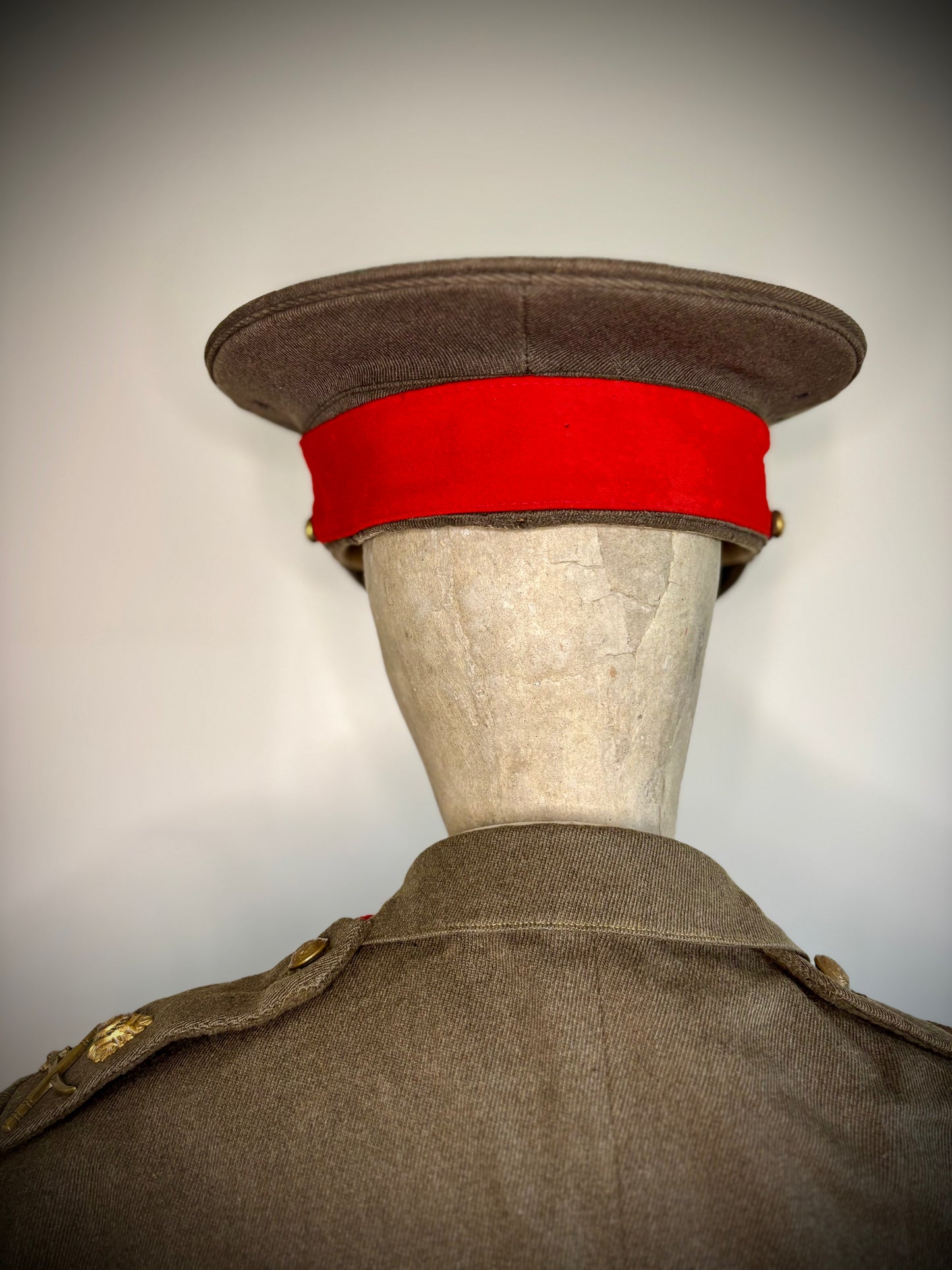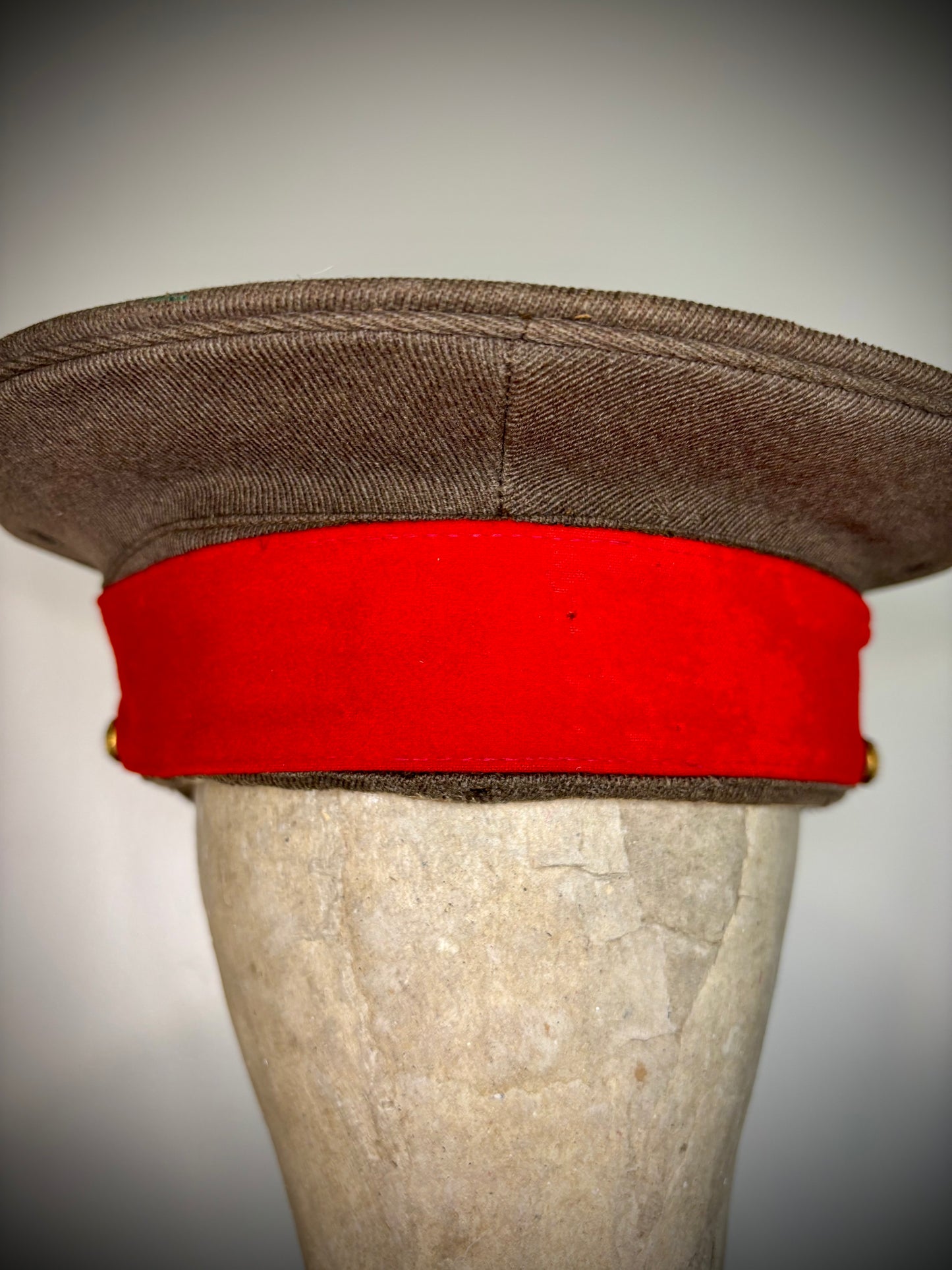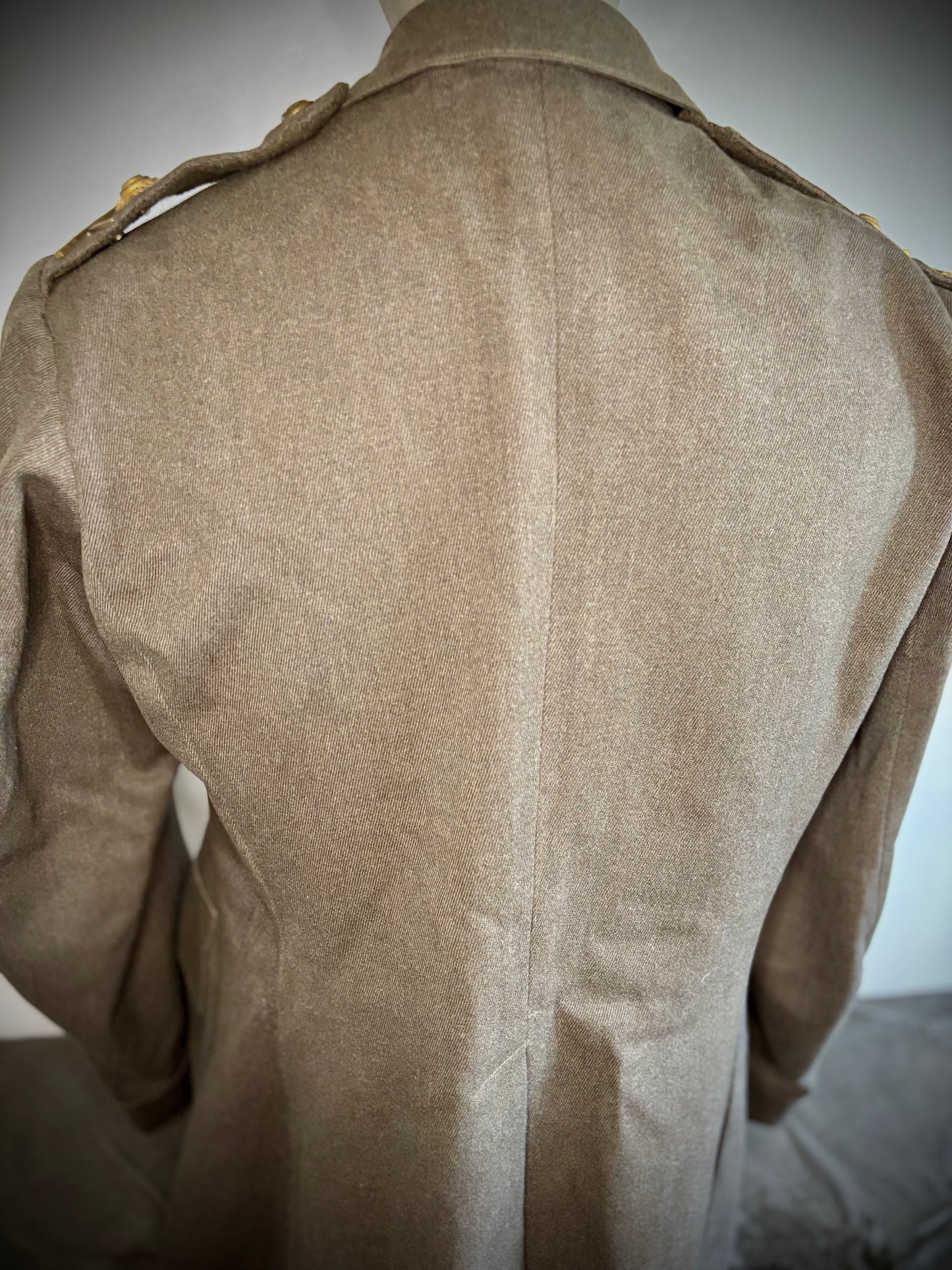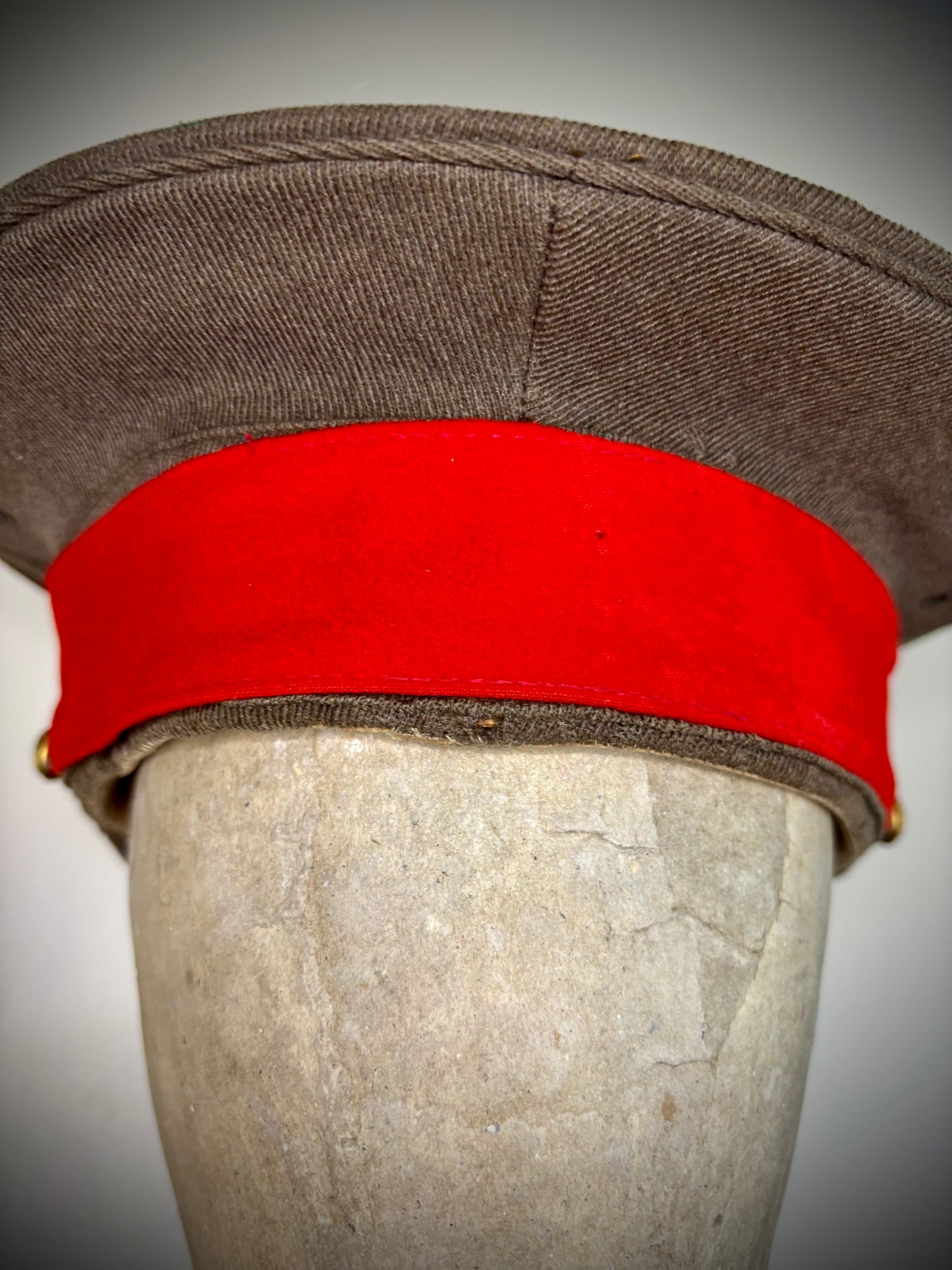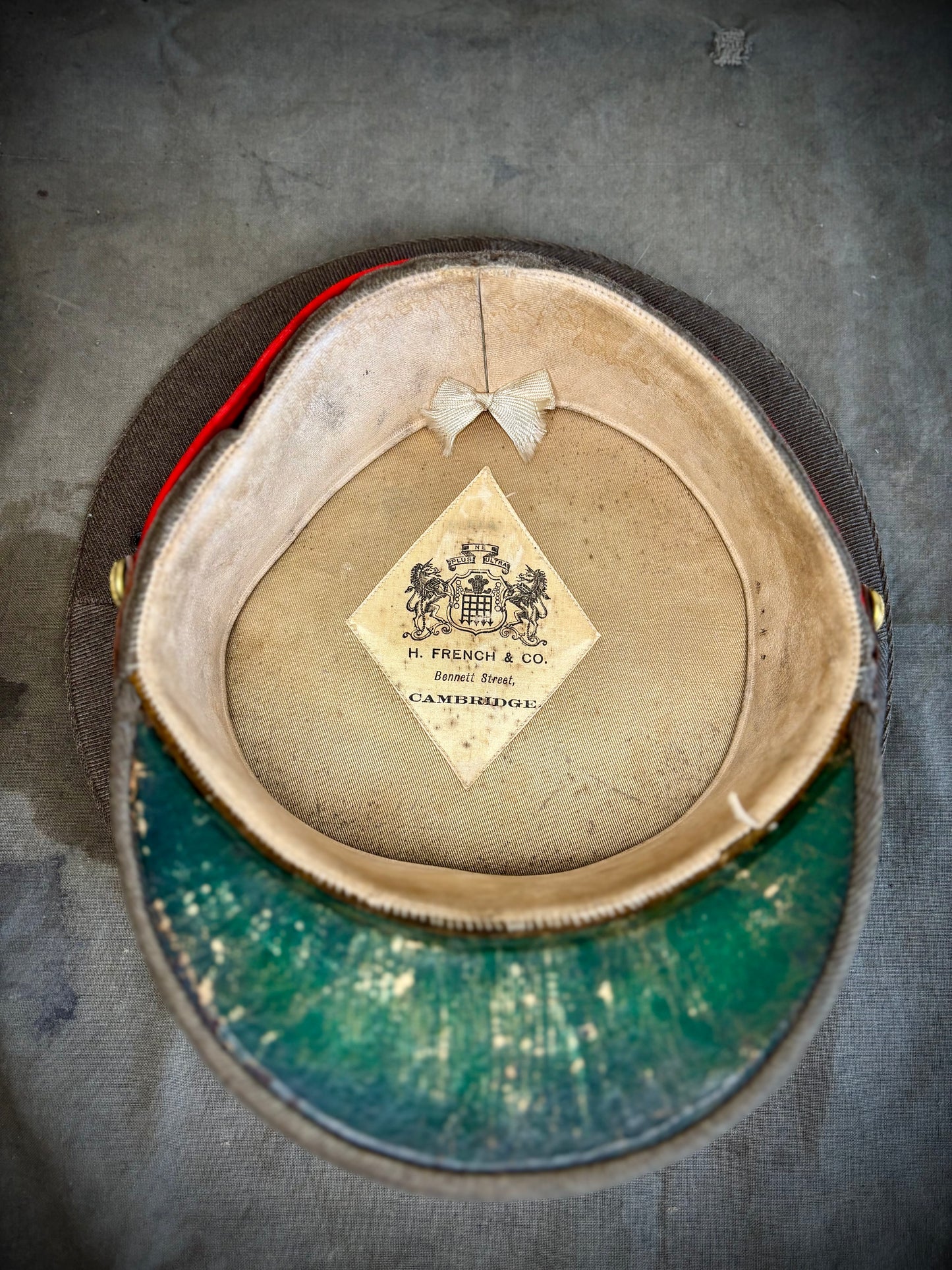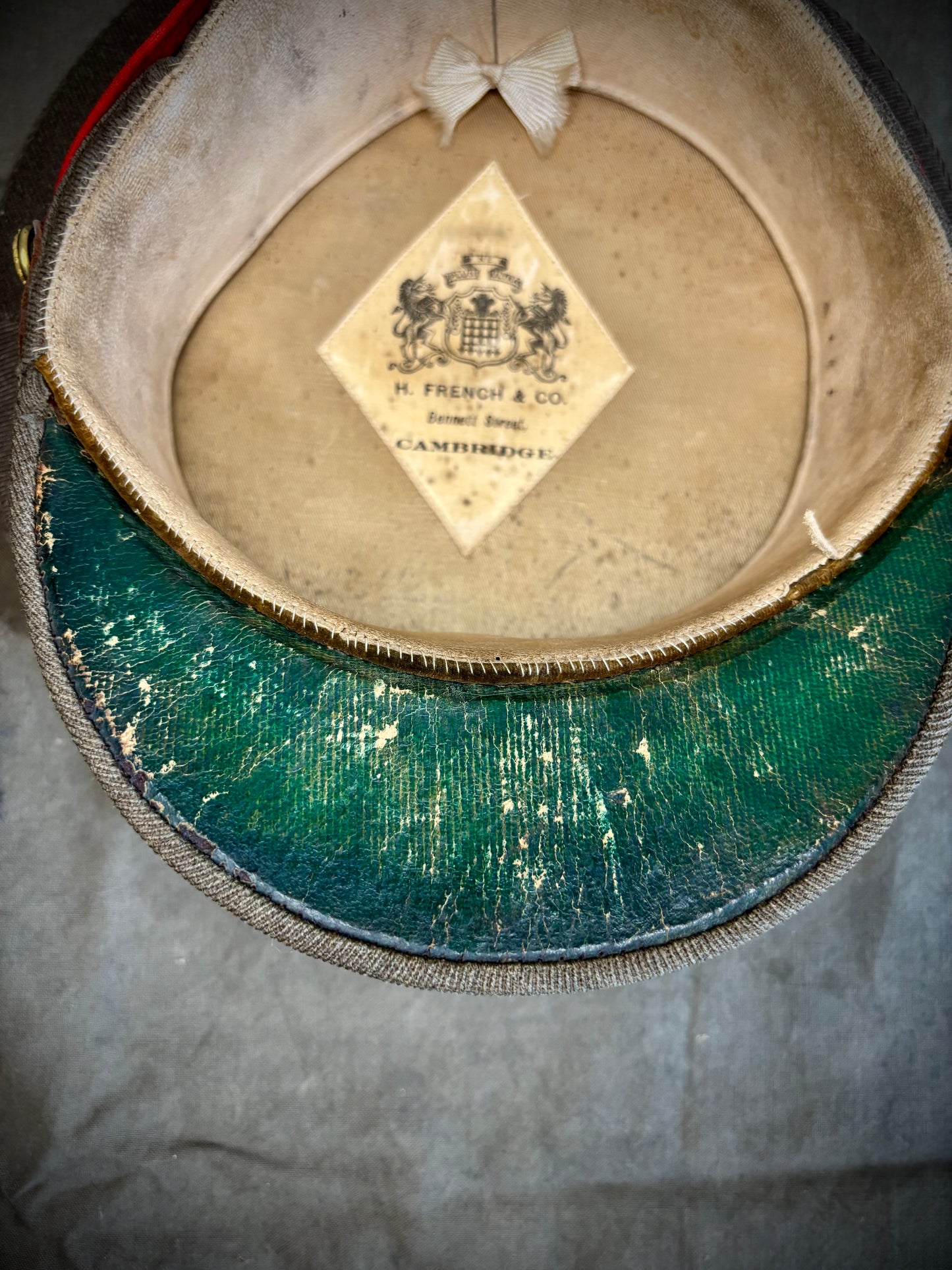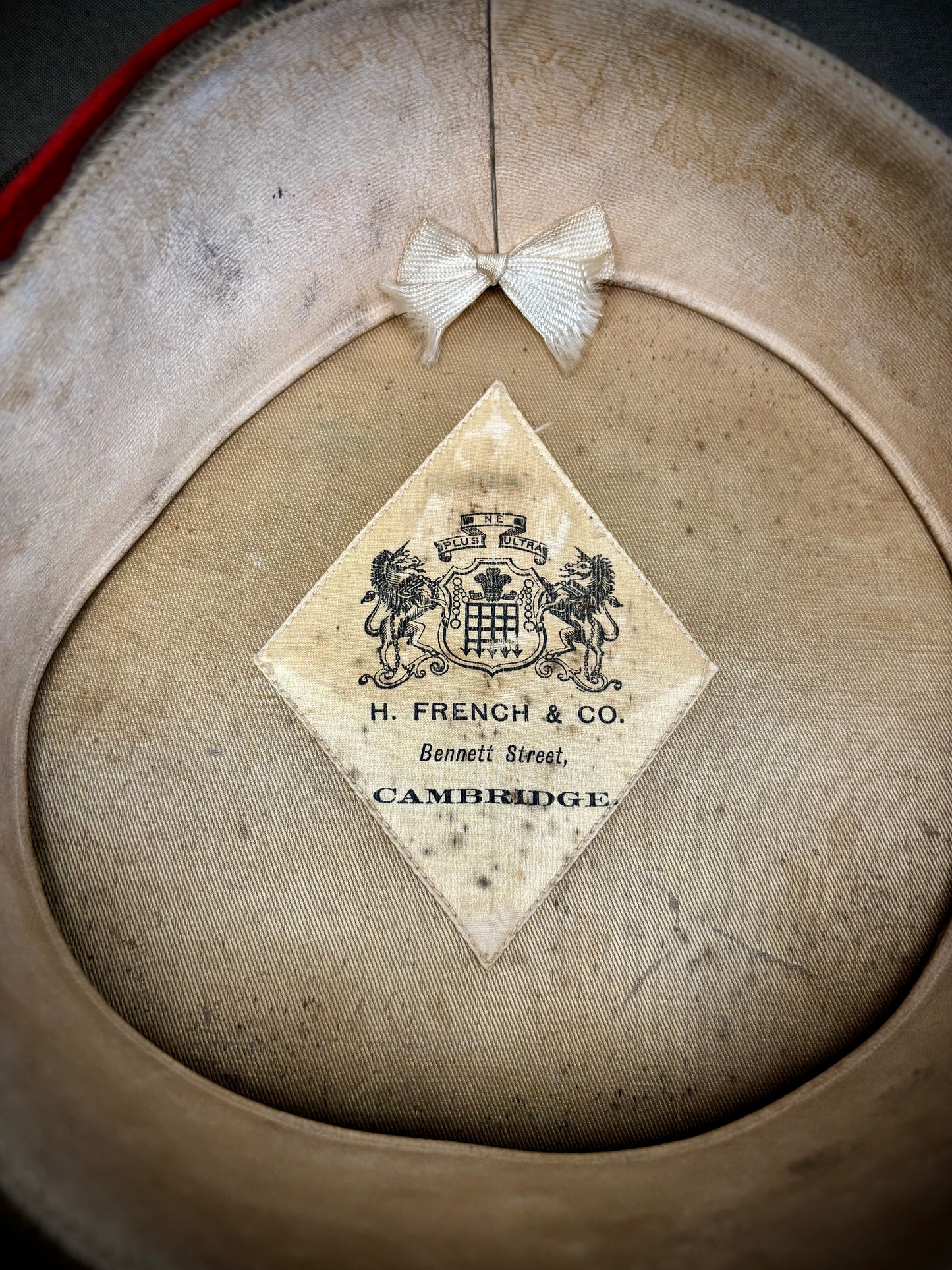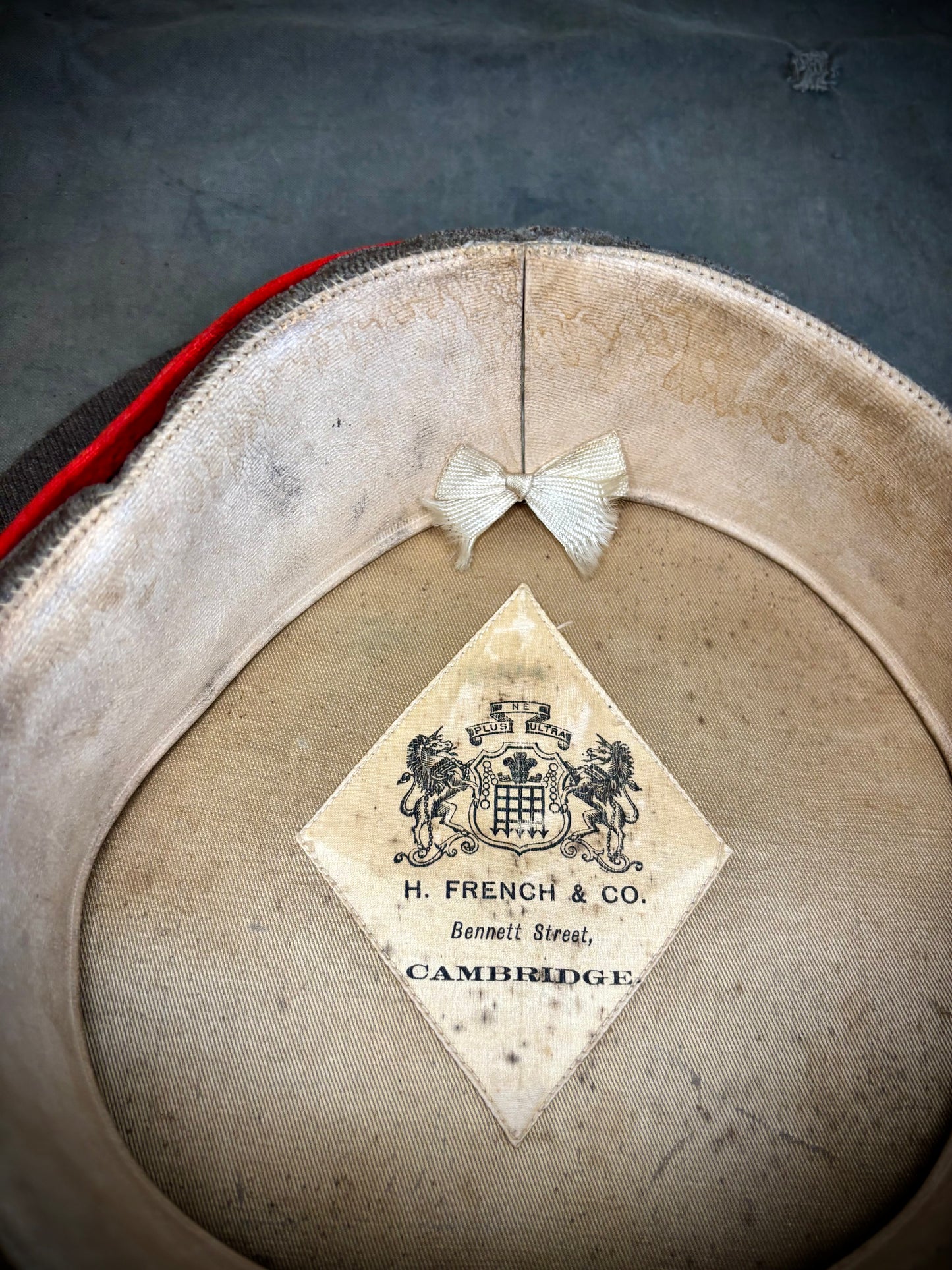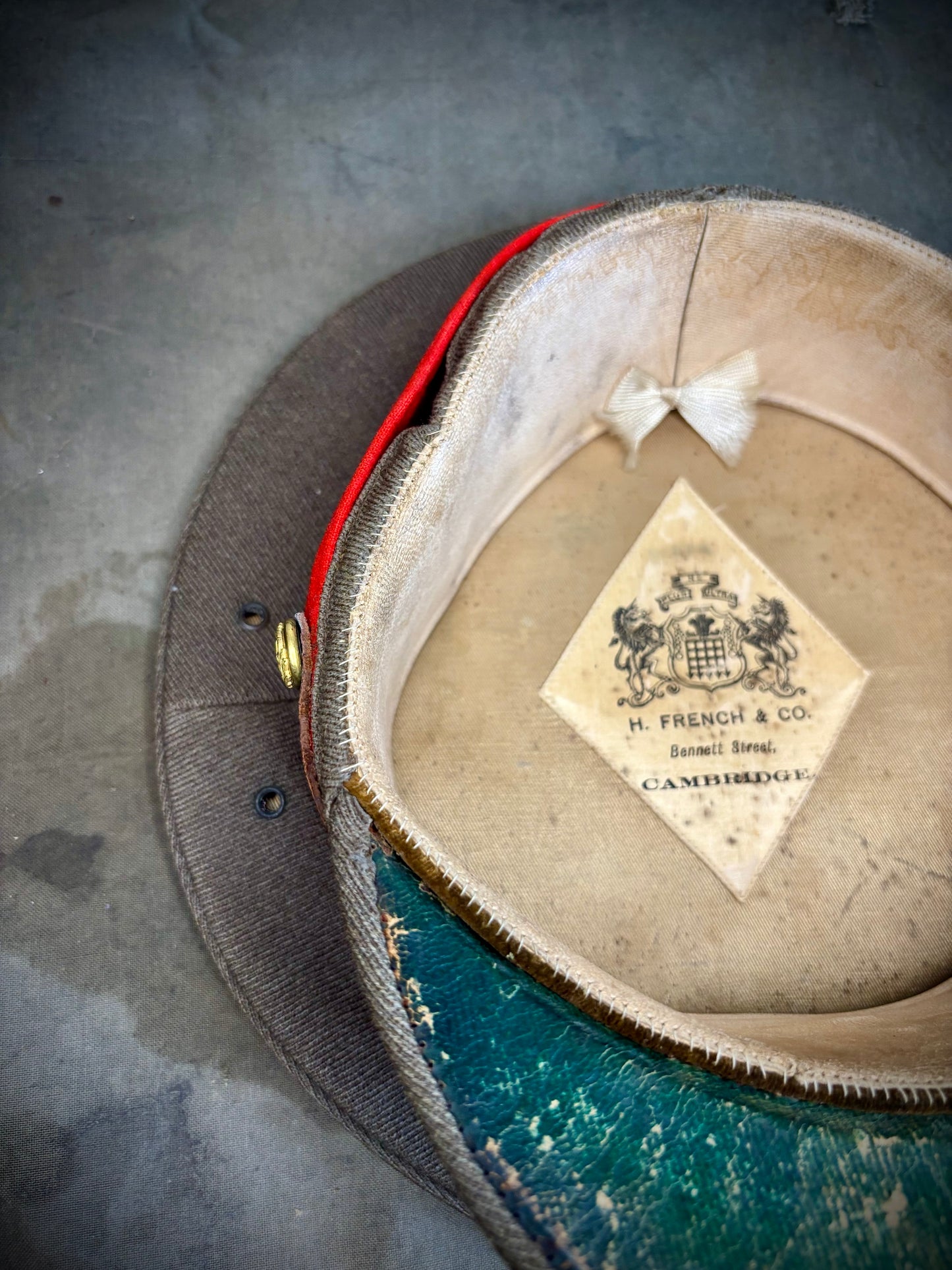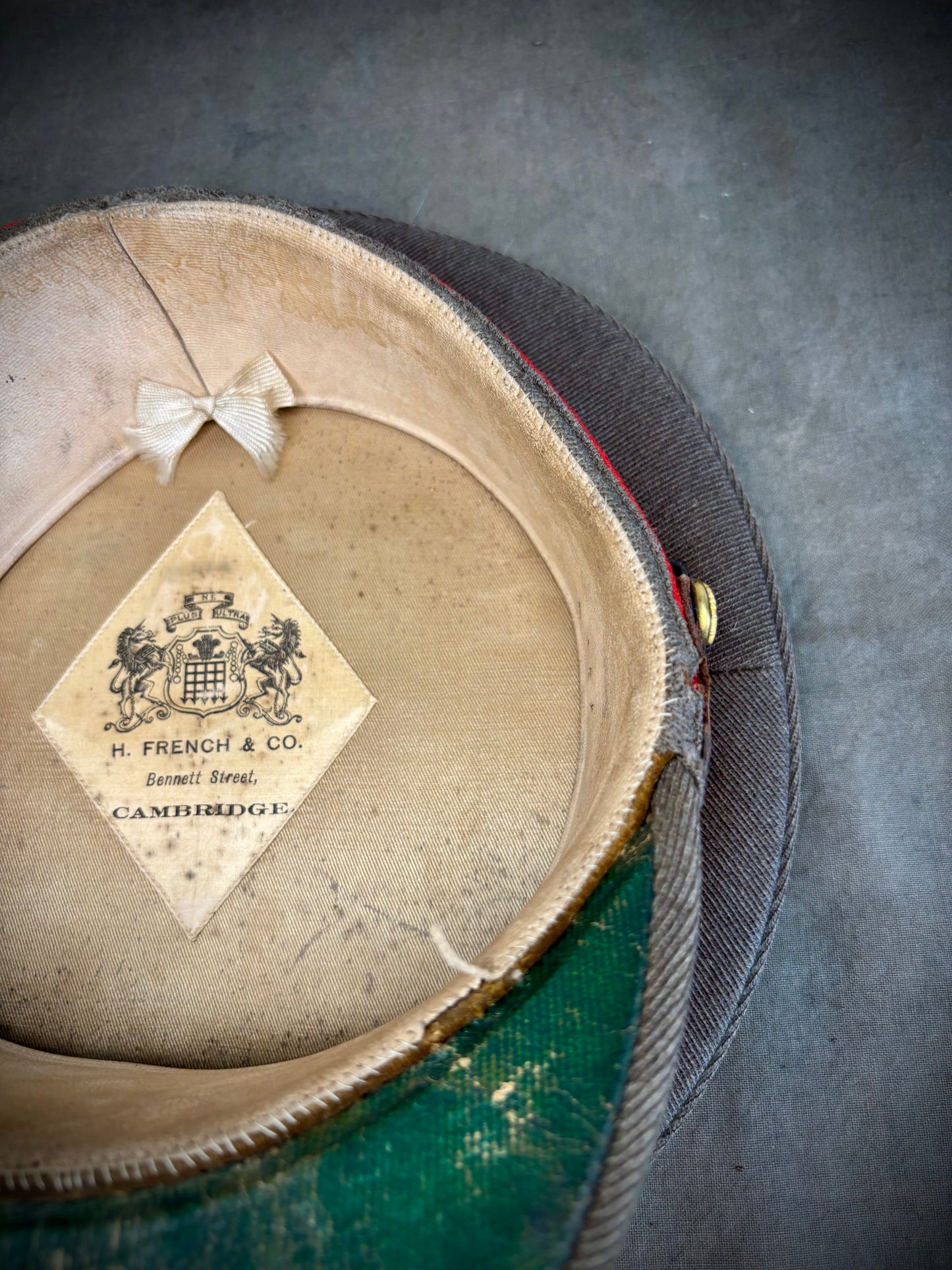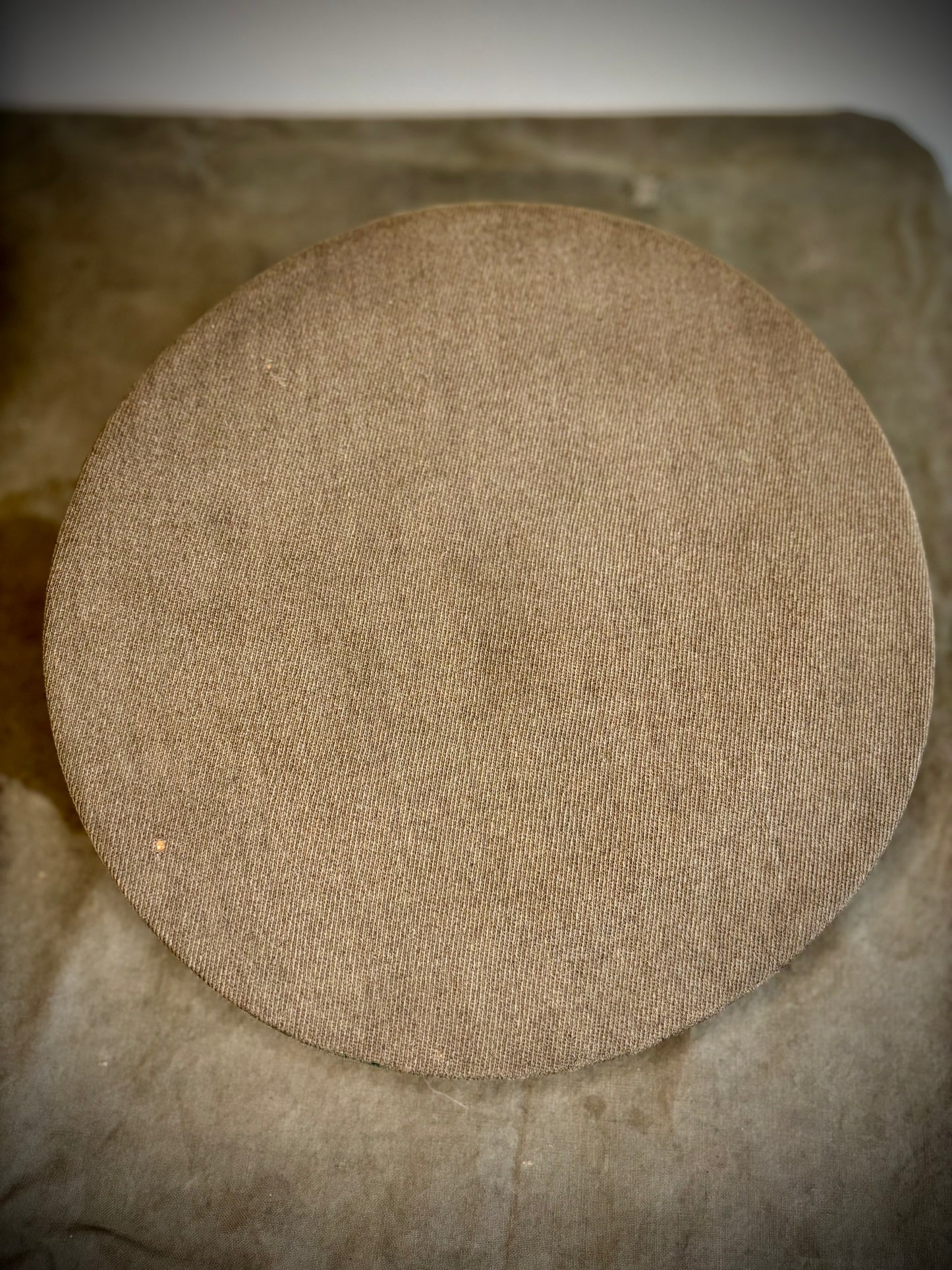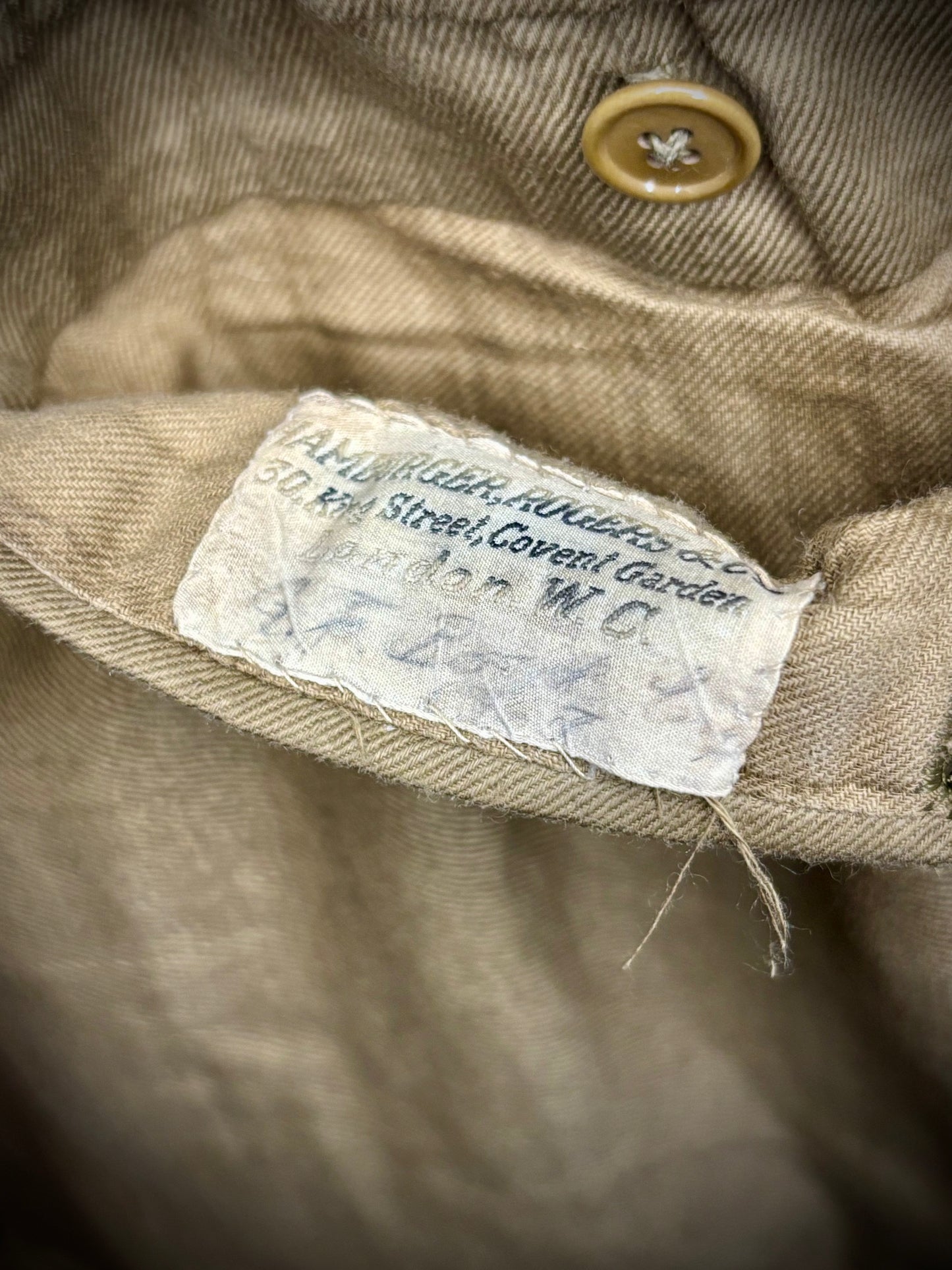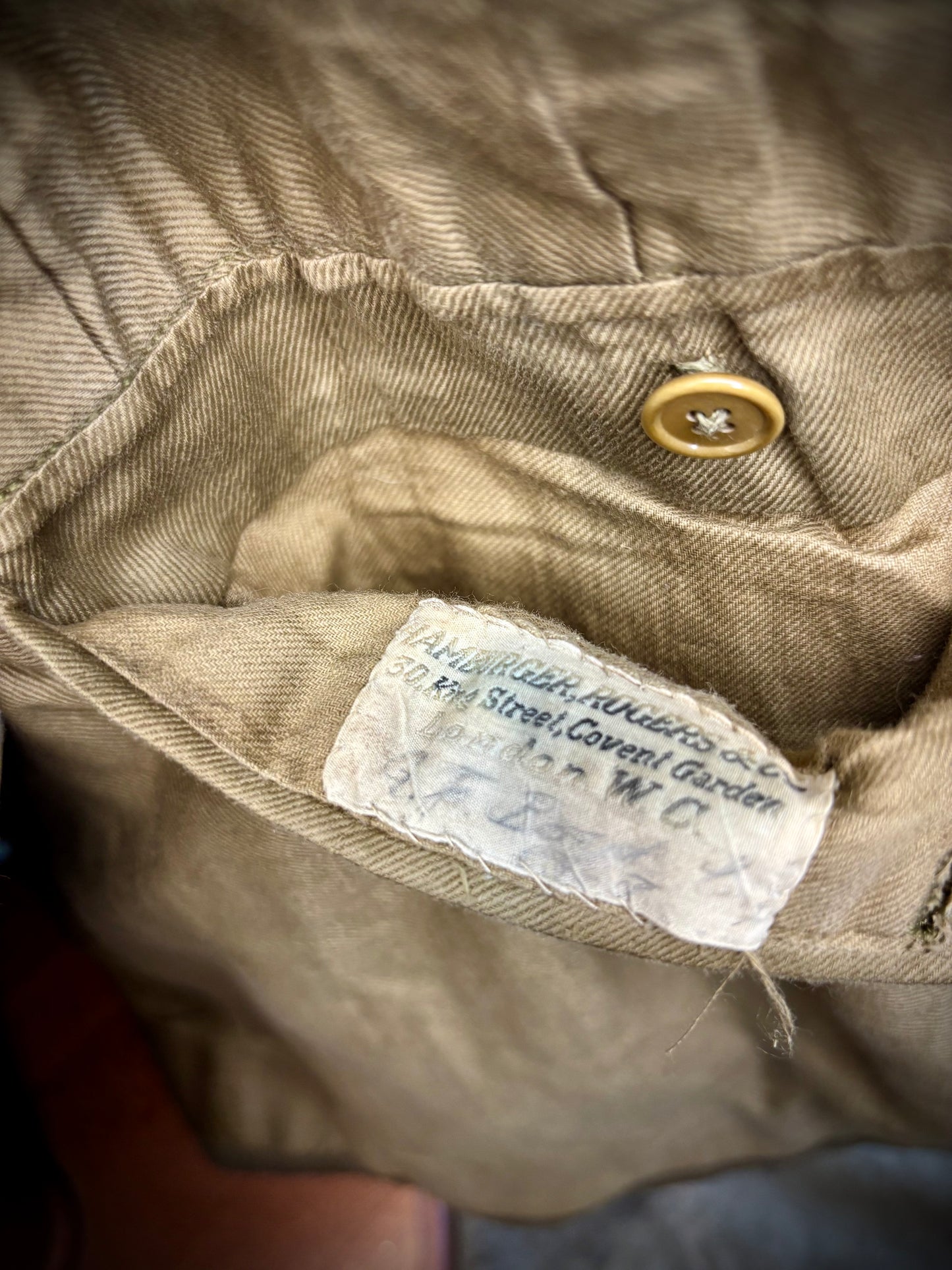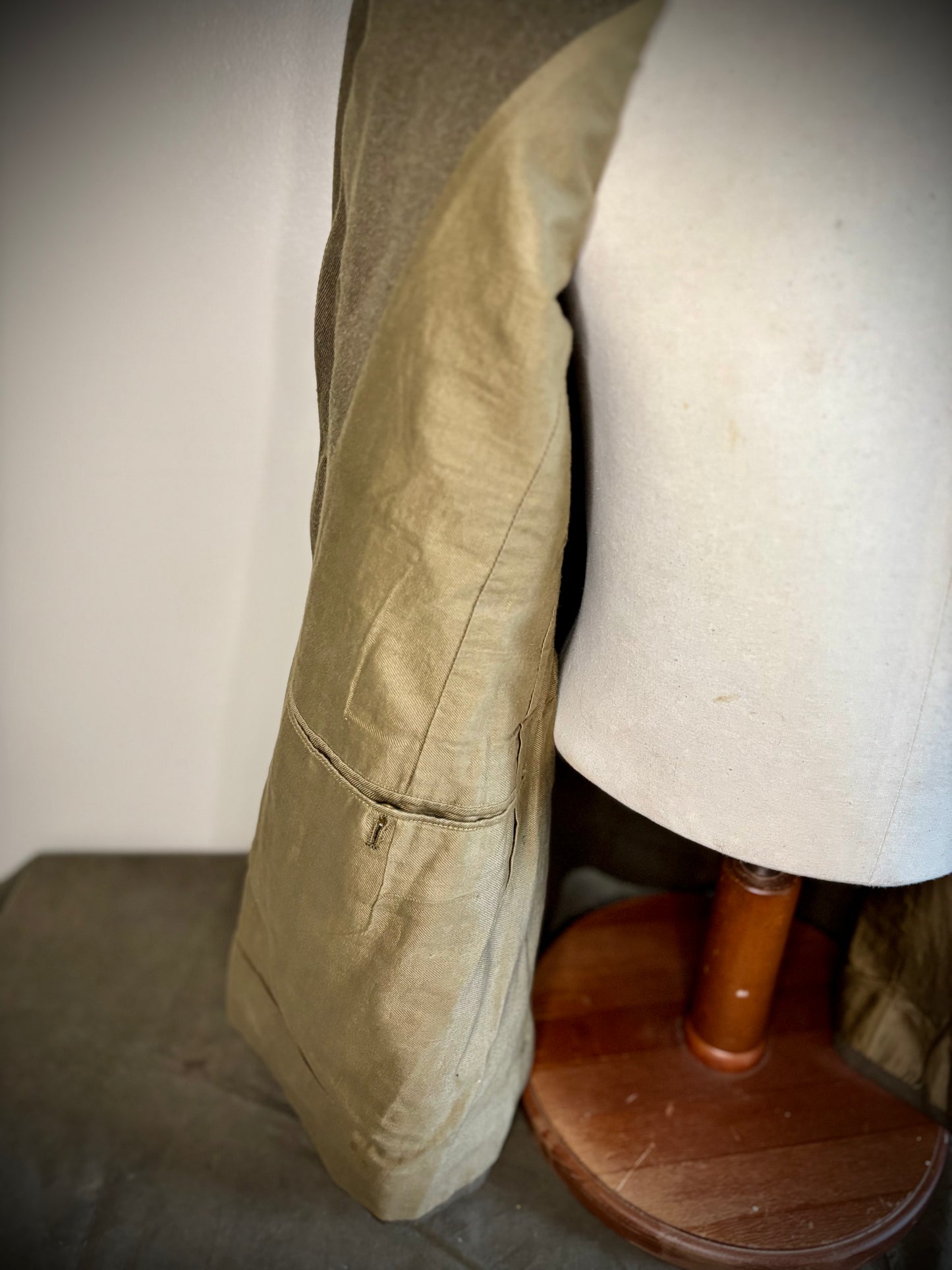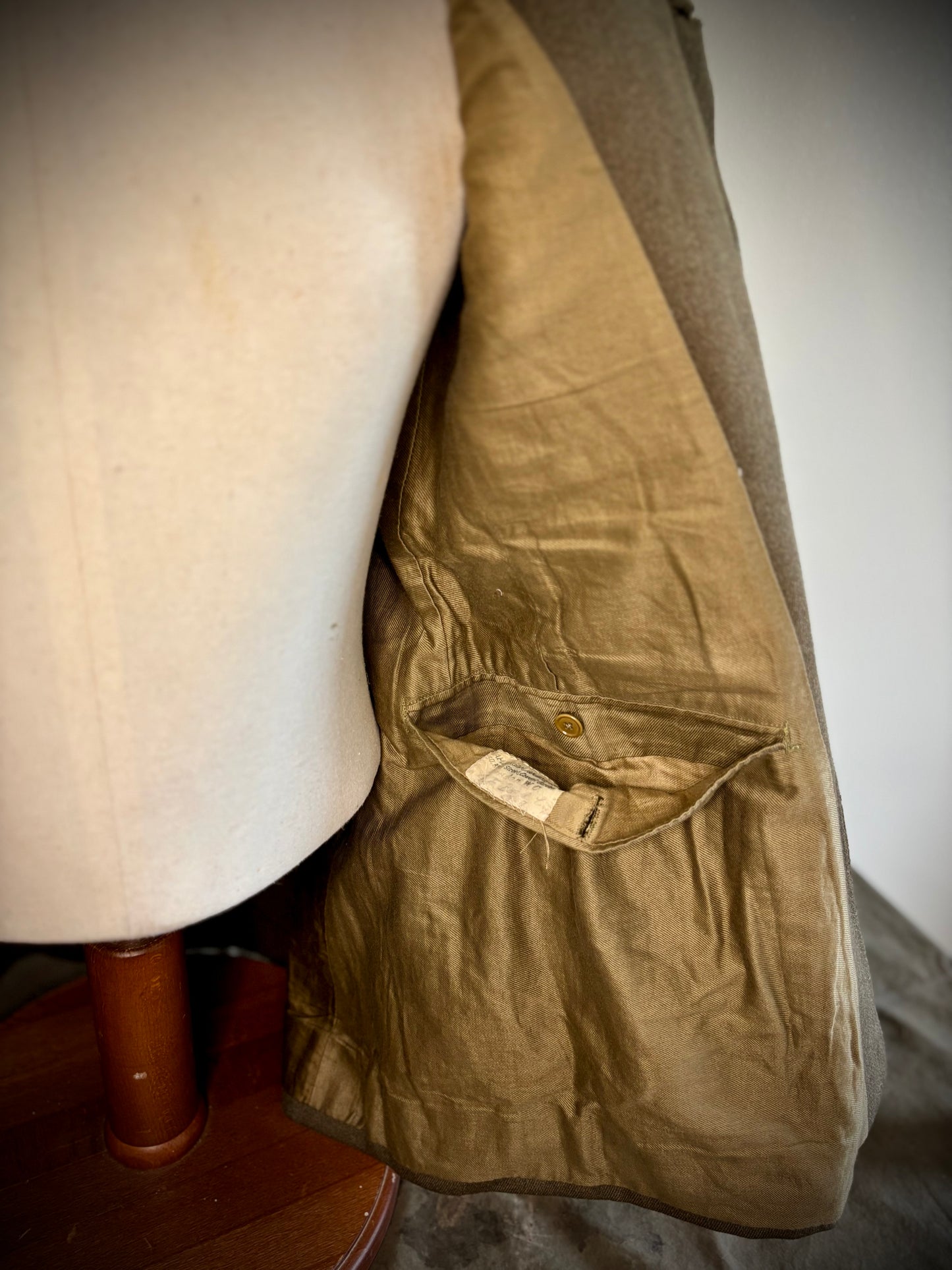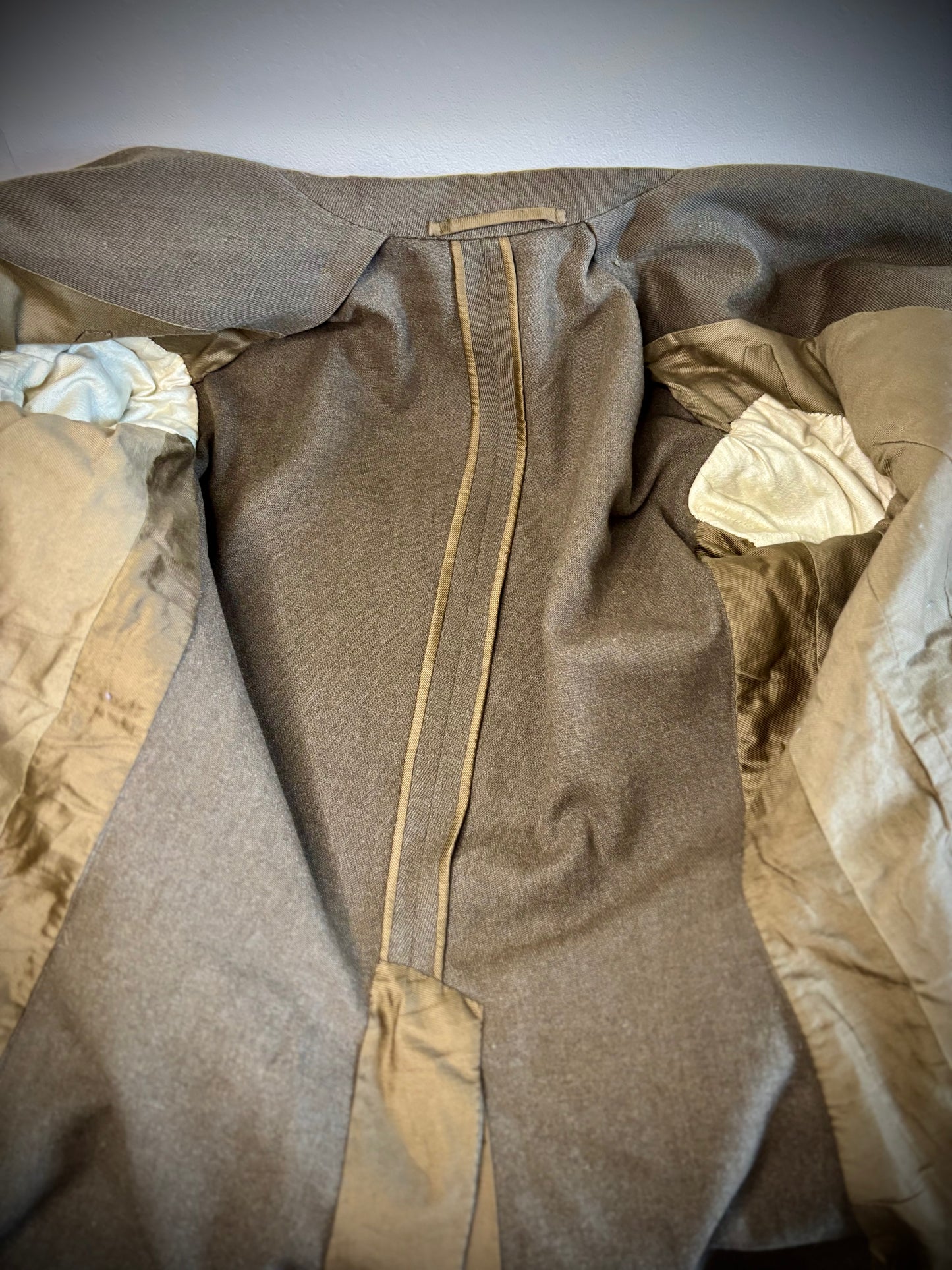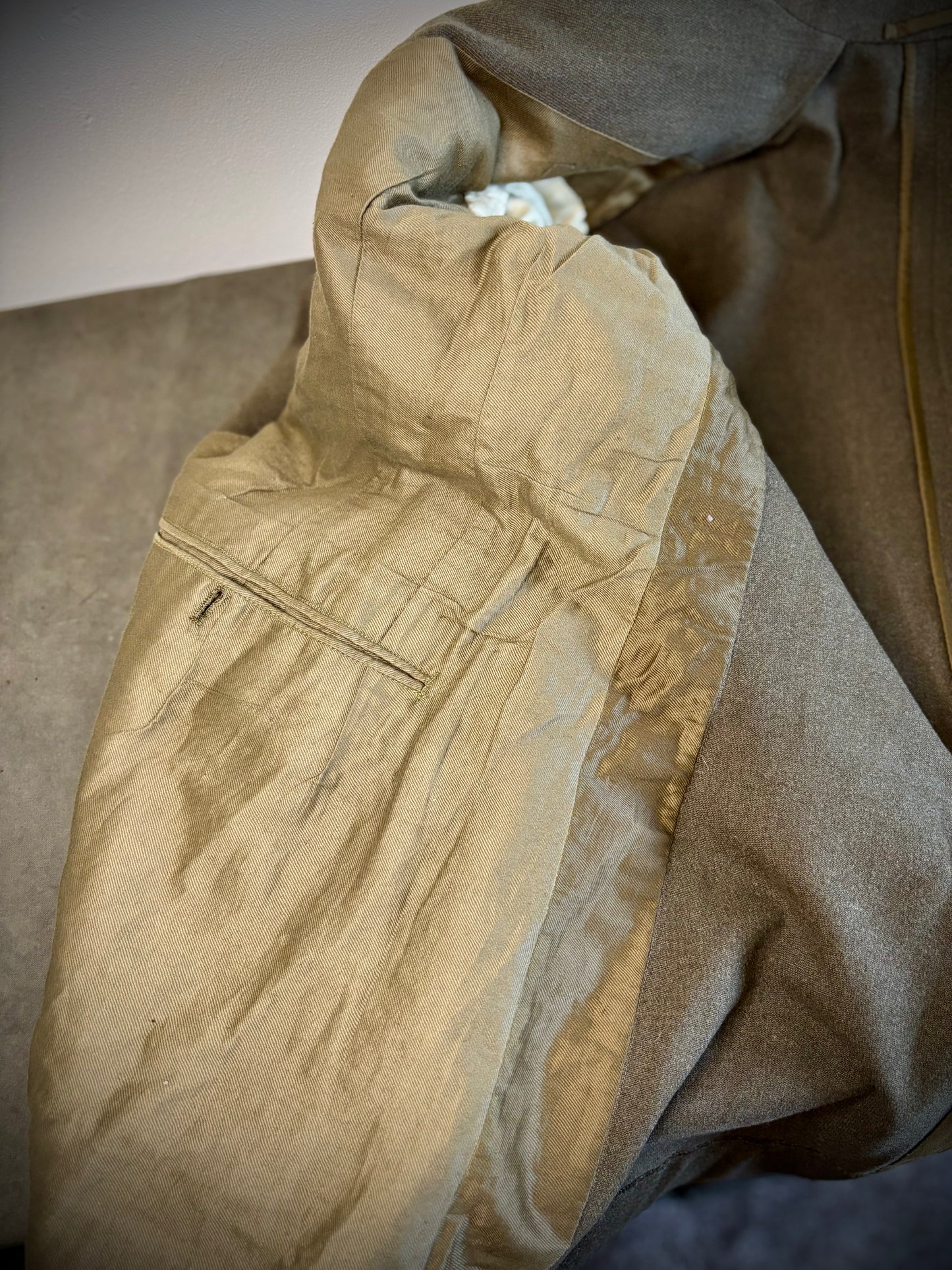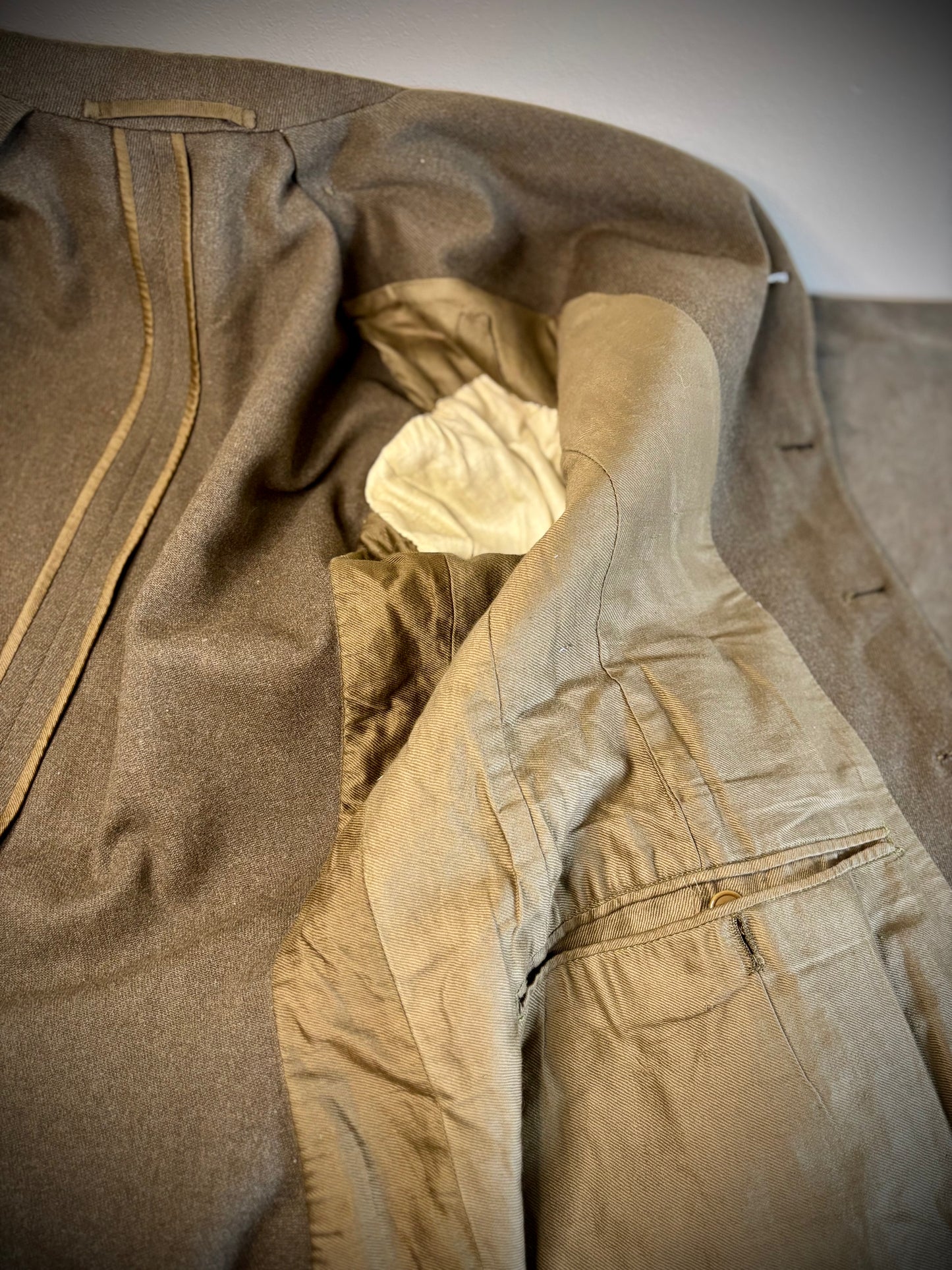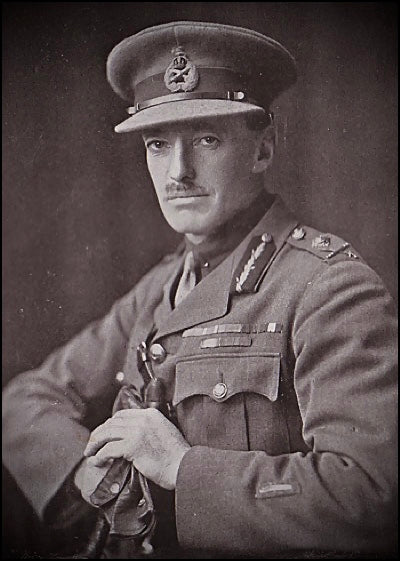No Mans Land Militaria
WW1 Major General Boyd's Tunic and Cap 46th Division
WW1 Major General Boyd's Tunic and Cap 46th Division
Couldn't load pickup availability
A rare WW1 era jacket that belonged to one of the most famous divisional commanders of the war.
Major-General Sir Gerald Farrell Boyd, KCB, CMG, DSO, DCM (19 November 1877 – 12 April 1930) was a senior British Army officer who served as Military Secretary from 1927 to 1930.
Educated at St Paul's School, Boyd enlisted in the Devonshire Regiment in 1895. He fought in the Second Boer War of 1899–1902 and took part in the Relief of Ladysmith, including the actions at Colenso, and the operations in the Orange River Colony, including the action at Wittebergen. During the war, he was commissioned into the 2nd Battalion, East Yorkshire Regiment in May 1900 and promoted to lieutenant on 26 April 1902.[3] He was mentioned in despatches three times (including 25 April 1902), received the Queen's South Africa Medal, and was appointed a Companion of the Distinguished Service Order (DSO) for his war service. The battalion stayed in South Africa throughout the war, and he returned home on the SS Orotava in December 1902, when they were stationed at Aldershot.
He went on to be brigade major of the 4th Division's 11th Infantry Brigade in September 1912.
Boyd served in the First World War, which began in the summer of 1914, with the 11th Infantry Brigade, commanded by Brigadier General Aylmer Hunter-Weston, as part of the British Expeditionary Force (BEF), which was sent to the Western Front. In February 1915 he became a general staff officer, grade 2 (GSO2) of the 1st Division, and was promoted in March to major, when he transferred to the Royal Irish Regiment and was advanced to the brevet rank of lieutenant colonel, "for distinguished service in the field," that same month. In July, he took over the position of general staff officer, grade 1 (GSO1) of the 6th Division, in succession to Lieutenant Colonel John Shea. In June 1916, he was promoted to the temporary rank of brigadier general and served as the general staff of V Corps. He was promoted to brevet colonel, "for distinguished service in the field," in January 1917. He was made commander of the 170th Infantry Brigade in France in July 1918 and, after being promoted to the temporary rank of major general in September, was made general officer commanding (GOC) of the 46th (North Midland) Division. He led the 46th Division when it stormed the Hindenburg Line at Bellenglise during the Battle of St Quentin Canal on the 29th September 1918.
The tunic which is named to Boyd inside one of the inside pockets, is in almost immaculate condition showing that he either wore it as his 'sunday best' or it was never actually worn. This could explain why there are no medal ribbons on it. The cap is not named however shows signs of use both inside and outside. Although I cannot confirm if the cap belonged to Boyd, as you can see from the photograph Ive attached, the cap is exactly the same as what he is wearing in the studio picture. Overall the cap is in fair condition for its age with one or two small moth nicks and the odd bit of fraying however is a rare item and looks amazing alongside the tunic.
Share
